

• Erectile Dysfunction Affecting Younger Men
• Lifespan Gap Between the Sexes is Shrinking INSIDE






• Erectile Dysfunction Affecting Younger Men
• Lifespan Gap Between the Sexes is Shrinking INSIDE



The gender of your doctor may play a part in your prognosis:
New research shows that hospitalized patients are less likely to die if they're treated by a female physician.
About 10.15% of men and 8.2% of women died while under the care of a female doctor, versus 10.23% and 8.4% when treated by a male doctor, according to results published April 22 in the Annals of Internal Medicine. This is a troubling discrepancy, given that patient outcomes
shouldn't differ if men and women practice medicine in the same way, said senior study author, physician Yusuke Tsugawa. He's an associate professor-in-residence of medicine in the division of general internal medicine and health services research at the David Geffen School of Medicine at UCLA in Los Angeles.
“What our findings indicate is that female and male physicians practice medicine differently, and these differences have a meaningful
impact on patients' health outcomes,” Tsugawa said in an UCLA news release.
For the study, researchers analyzed Medicare claims data from 2016 to 2019 for about 458,100 female and nearly 319,800 male patients. Of those, roughly 31% were treated by female doctors.
Not only were patients less likely to die with a female doctor, but they also were less likely to land back in the hospital within a month of dis-
charge, researchers found.
They had several theories why male doctors might not be as effective as female doctors in treating women.
Male doctors might underestimate the severity of a female patient's illness, researchers said. Prior studies have found that male doctors tend to misjudge women's pain levels, heart and GI symptoms and stroke risk.
It also might be that women communicate better and are more comfortable with female doctors, making it likelier they disclose important information leading to better diagnosis and treatment.
More research is needed into how and why male physicians practice medicine differently, as well as the impact this difference has on patient care, Tsugawa said.
“Further research on the underlying mechanisms linking physician gender with patient outcomes, and why the benefit of receiving the treatment from female physicians is larger for female patients, has the potential to improve patient outcomes across the board,” Tsugawa said.
Tsugawa added that these results show gender gaps in physician pay must be eliminated.
“It is important to note that female physicians provide high-quality care, and therefore, having more female physicians benefits patients from a societal point of view,” Tsugawa said.
A 2021 analysis published in the journal Health Affairs found that female physicians earn an estimated $2 million less than male doctors during a 40-year medical career.

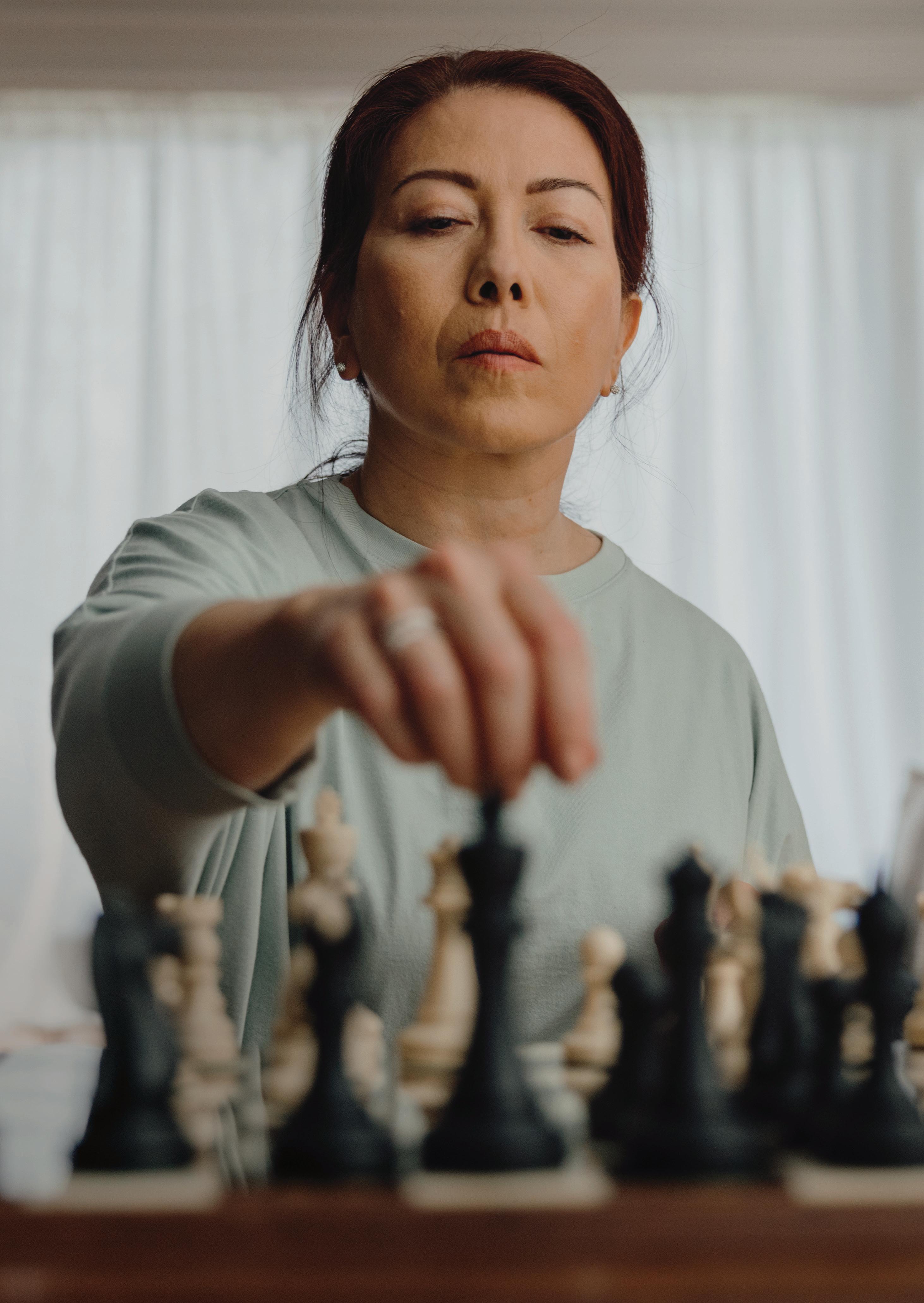
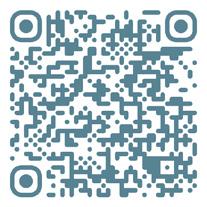
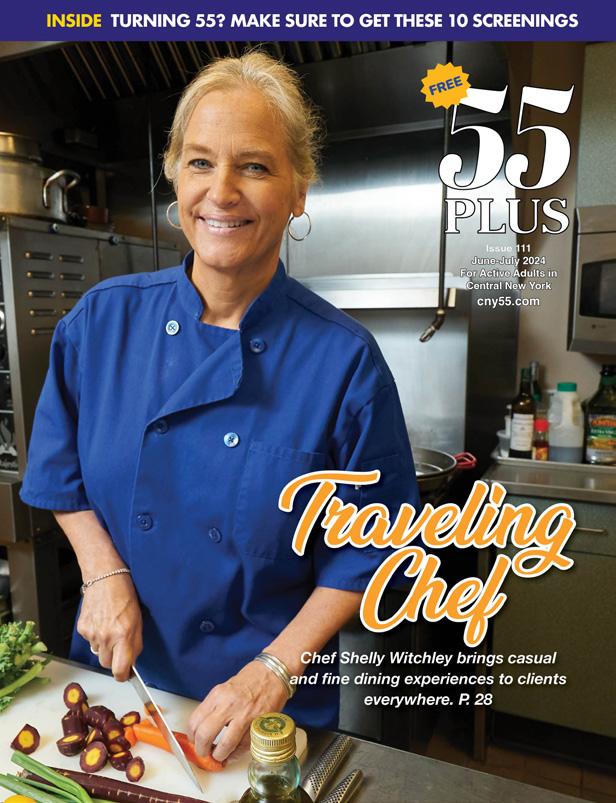

New doctor at Crouse is an endocrine surgeon, one of the few in Upstate New York. He talks about his specialty, which involves operating on endocrine glands
Q: You’re an endocrine surgeon. How rare of a subspecialty is that?
A: Yes, there are relatively few of us across the country.
Q: What kinds of operations do you perform?
A: My specialized training involves operating on endocrine glands, so that includes the thyroid gland, parathyroid gland and the adrenal glands.
Q: What kinds of conditions would necessitate operating on these glands?
Q: What got you interested in endocrine surgery?
A: Endocrine surgery was an area of my general surgery residency where I got very good operative exposure and had excellent mentors. I enjoyed the anatomy and the technical aspects of performing the relatively detail-oriented surgeries. And I enjoyed the diversity of patients and disease pathologies I was able to treat as an endocrine surgeon.
Q: And you’re also a general surgeon, correct? Are you also doing general surgery at Crouse?
Q: Are outcomes from endocrine surgery usually good?
A: We’re fortunate in that we tend to have very good outcomes even among our thyroid cancer patients. Part of it is the nature of the disease, part of it is because we have very good treatment, including surgery.
Q: What would the process be for a patient leading up to endocrine surgery?
A: Thyroid patients will usually come to see me if they have an enlarged thyroid that’s causing them symptoms or have symptoms related to hyper-secretion of hormones from one or more thyroid nodules. Or, more commonly, they have a nodule that was discovered maybe incidentally. They’ll typically have a fine needle aspiration biopsy before they come to see me and be referred to me depending on the outcome of biopsy. Parathyroid patients typically have undergone a work-up for high calcium levels. Many patients referred for adrenal disease have what we call incidentalomas, which is an adrenal mass which is seen on imaging that was done for something else. The patients with functional adrenal tumors will typically be having symptoms, whether it’s hypertension that’s difficult to control, high blood sugars or fast heart rate.
SCAN HERE TO SUBSCRIBE
Applications are now being accepted! 62+ No smoking!
SIMEON DEWITT
150 E. 1st St. Oswego, NY 13126 315-343-0440
TOWPATH TOWERS
100 Rochester St. Fulton, NY 13069 315-598-4700
4920 N. Jefferson St. Pulaski, NY 13142 315-298-6101
The following services are included in your rent
• Trash Collection
• Free Wi-Fi
• Bus for shopping/groceries
• Heat, Electricity & Hot Water
• Snow Removal & Lawn Care
• Planned Activities
• All repairs & maintenance
Preference given for veterans & spouses of veterans.
A: Thyroid cancers or symptomatic nodules such as a thyroid goiter are common. Sometimes there are functional thyroid nodules. Patients can also see me for parathyroid disease which causes high calcium levels in the blood or adrenal masses
A: Yes, I am.
Q: What brought you to Crouse and Central New York?
A: I moved here for the job. I was attracted to Crouse because it’s a well-respected health system. It has

Q: Are these issues usually resolved by surgery, or do they require additional therapies?
A: It varies. So for thyroid there’s been a lot of emphasis on trying to deescalate the extent of surgery. So typically surgery is part of a multimodal treatment, which may or may not include radioactive iodine. Typically, patients aren’t getting any sort of therapy pre-operatively for thyroid cancer. There are some medications that are used to treat parathyroid disease. Those are usually reserved for patients who aren’t good candidates for surgery or have something called secondary hyperparathyroidism, where the disease is caused by kidney dysfunction rather than the glands themselves.
Q: What kinds of recovery times are we looking at with endocrine surgery?
A: Patients tend to do very well post-operatively. Either they go home the same day or the following day.
Name: Clinton Ingersol, M.D.
Position: Endocrine and general surgeon at Crouse Hospital
Hometown: Mount Vernon, Ohio
Education: Frank H. Netter School of Medicine at Quinnipiac University, New Haven, Connecticut; residency at Riverside Methodist Hospital, Columbus, Ohio; fellowshio: endocrine surgery at University of Miami, Jackson Health, Miami
Affiliations: Crouse Hospital, SUNY Upstate Medical University Hospital
Organizations: American Association of Endocrine Surgeons; American College of Surgeons
Family: Wife, twin boys, one girl Hobbies: Hiking, cycling, traveling, classical music, spending time with family.

Want to live longer? Choose the stairs over the elevator, a new review suggests.
Folks who regularly climb stairs have a 24% reduced risk of dying from any cause, and a 39% reduced risk of dying from heart disease, compared to those who always take the elevator, researchers found.
Stair climbing also is associated with a lower risk of developing heart disease or suffering a heart attack, heart failure or stroke, results show.
“If you have the choice of taking the stairs or the lift, go for the stairs as it will help your heart,” said researcher Sophie Paddock, of the University of East Anglia and Norfolk and Norwich University Hospital Foundation Trust in Norwich, U.K..
Stair climbing is a practical, easily accessible form of physical activity, Paddock said. Despite this, it's often overlooked by folks rushing to get to a higher floor.
“Even brief bursts of physical activity have beneficial health impacts,
and short bouts of stair climbing should be an achievable target to in tegrate into daily routines,” Paddock said.
For the study, researchers pooled data from nine studies involving more than 480,000 people. Studies were included regardless of the num ber of flights people climbed or the speed at which they took them.
“Based on these results, we would encourage people to incorpo rate stair climbing into their day-today lives,” Paddock said in a news release. “Our study suggested that the more stairs climbed, the greater the benefits — but this needs to be confirmed. So, whether at work, home or elsewhere, take the stairs.”
Researchers presented the findings recently at ESC Preventive Cardiology 2024, a scientific congress of the European Society of Cardiology. Findings presented at medical meetings should be considered preliminary until published in a peer-reviewed journal.


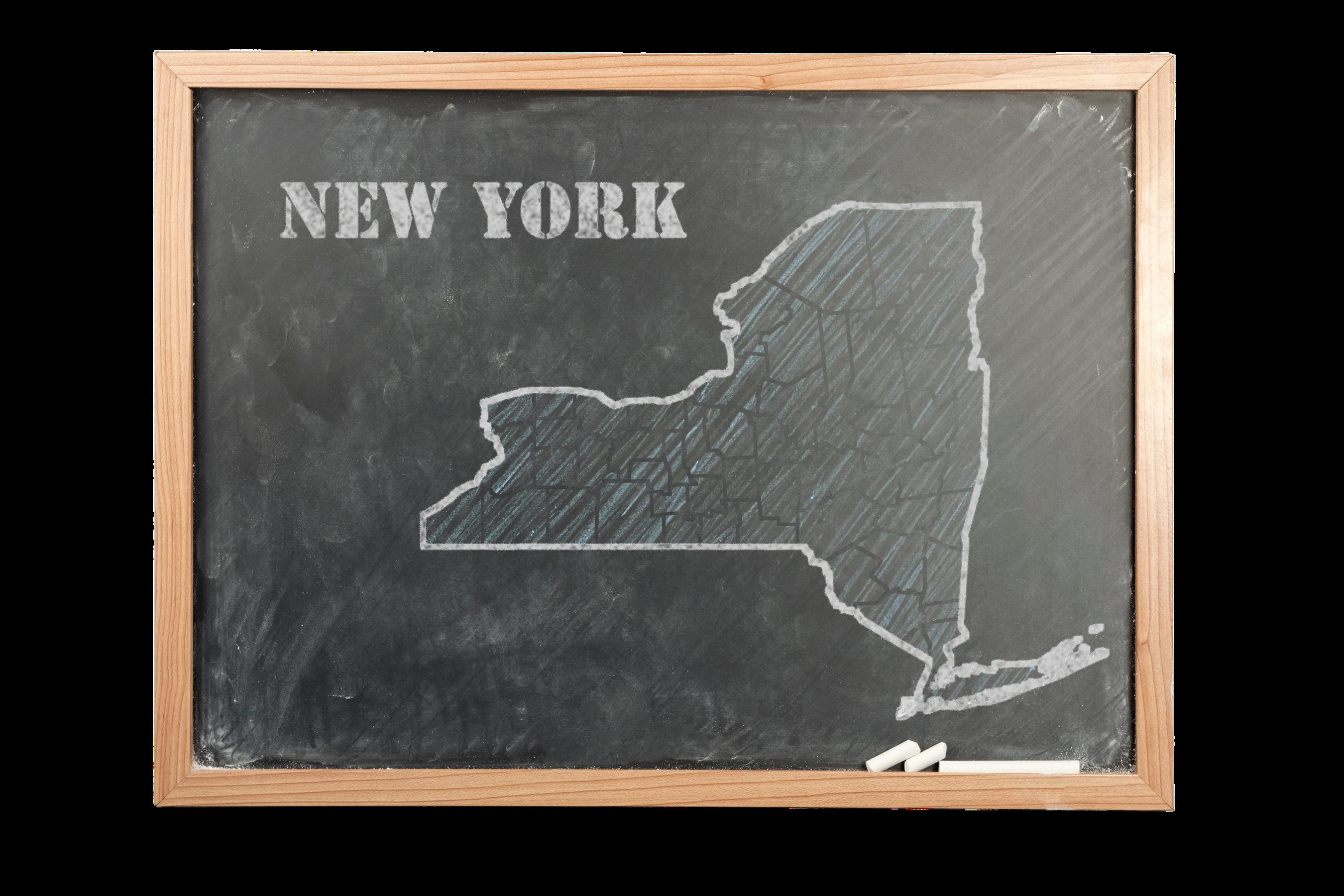

A monthly newspaper published by Local News, Inc. 33,500 copies distributed throughout more than 1,000 high-traffic locations, including all Wegmans stores. In Good Health is published 12 times a year by Local News, Inc. © 2024 Local News, Inc. All rights reserved. P.O. Box 276, Oswego, NY 13126 Phone: 315-342-1182 • Fax: 315-342-7776 • Email: editor@cnyhealth.com
&
:
• Associate Editor: Stefan
• Writers: Deborah J.
Roach, George Chapman Advertising: Amy Gagliano, Pam Roe, Tom Bachman Layout & Design: Angel Campos-Toro • Office Manager: Allison Lockwood
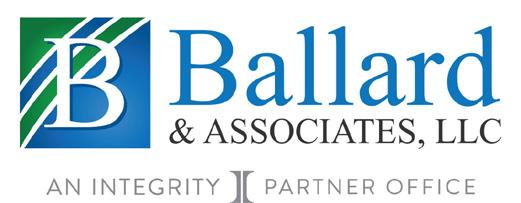
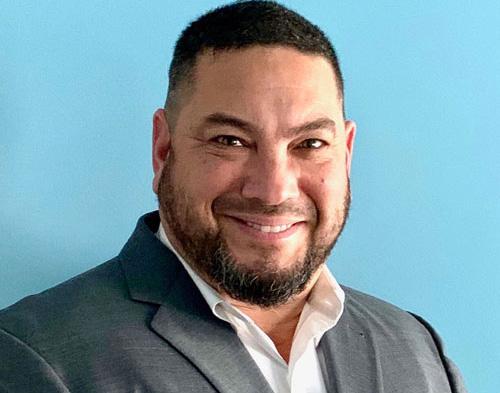
Editor’s Note: We recently featured Gwenn’s travel adventures in the MayJune issue of “55Plus” — www.roc55. com. Her article included tips for solo travel, which we also wanted to share with readers of “In Good Health.”
“Oh, I could never do that!” exclaimed an old friend of mine I bumped into recently. She was reacting to my enthusiastic account of traveling by myself to Paris this past September.
And, she was right of course — she will never experience the fun and fulfillment of traveling solo, as long as she holds onto that attitude.
Traveling alone, just like living alone, requires the right frame of mind for it to be successful and enjoyable.
But why travel solo in the first place, you might ask.
Why go to Paris alone?
Why not grab a friend or two and make it a shared experience?
And to that I answer, because the potential for self-discovery and savoir-faire that comes with solo travel is absolutely priceless.
While I’m not suggesting an exclusive diet of solo travel, I am encouraging those who live alone (and even those who don’t) to consider this occasional mode of travel for two really good reasons: you’ll gain confidence and you’ll gain wisdom from your experiences.
For me, solo travel is a journey of growth and empowerment, much
like the adventures depicted in “Eat, Pray, Love.”
Below are 10 tips to make your solo experience safe, enjoyable, and memorable:
1. Adopt the right attitude: It starts here. You can do this, even if a spouse or partner took care of travel plans in the past. Solo travel can evoke powerful insights about yourself and your life.
Many discover that they are more capable, wiser, and self-reliant than they thought.
2. Start small and close to home: Ease into solo travel by taking short overnight or weekend trips to nearby destinations to build your confidence.
3. Follow your heart when choosing a destination: Let love be your guide. Do you love the beach? Cities? Food and wine? Outdoor adventures? Select a destination that aligns with your interests and desires.
And ask yourself: What do I want to get out of my trip? Relaxation, physical activity, cultural immersion, personal growth? Design your trip accordingly.
4. Plan, plan, and plan (and budget!): I started planning for my Paris trip two years prior to take-off. I opened a Paris savings account into which I weekly (and automatically) transferred money from my checking account.
Then, the research began — the fun part! I scoured the internet, purchased travel guides, talked with
friends, and delved into everything Parisian. Voila! My itinerary took shape and I booked my flight.
5. Carefully select accommodations: While rentals can offer a more local experience, I recommend hotels for solo travelers.
Take a close look at hotels with onsite cafés or courtyards where you can connect with other travelers. I’ve met wonderful people that way and picked up excellent tips for what to see and do.
Hotels also provide added security, convenience and helpful services for solo travelers. I always let the front-desk staff know I’m traveling alone and welcome their recommendations for dining, excursions, and transportation.
6. Keep safety a priority. Just as I do at home, I steer clear of unsafe areas, trust my instincts, and walk with confidence. In Paris, I dress to blend it and avoid looking like a tourist.
I know I’m doing something right, when other travelers mistake me for a local Parisian and ask for directions. There are safety tips galore on the web. Check ‘em out!
7. Stay connected: Sharing your experiences by phone or social media with friends and family can enhance your solo adventure.
It allows you to capture special moments and share your excitement. It also adds a layer of safety and peace of mind when others know of your whereabouts.
8. Pack light and smart: I learned this lesson early on. Waiting at a baggage carousel or hauling a heavy bag through crowded streets was not how I wanted to spend my time in Paris.
I bring a very small carry-on roller bag and a day tote for when I’m out and about. Rick Steves is my trusted travel guru. Find his packing tips on Ricksteves.com
9. Explore and immerse yourself: Embrace the freedom of solo travel by trying new things. Immerse
yourself in the local culture, try new foods, and engage with locals. Join guided tours and activities to meet like-minded travelers.
I’ll never forget the midnight “rain or shine” bike tour I booked in Paris. As soon as the group assembled, the skies opened up. Disposable rain ponchos were quickly distributed and off we went in the pouring rain.
It’s one of my fondest and wettest memories!
10. And finally, importantly . . . pace yourself. Trying to see and do too much can be exhausting and unfulfilling. A more relaxed itinerary – focused on what matters most to you – enables you to appreciate your chosen activities and sites more deeply.
It will also leave room for spontaneity and personal reflection on your solo journey. This way, you’ll be able to savor each moment, create meaningful memories, and return home feeling refreshed and inspired.
Are you on board? Ready to take off?
Whether it’s a one-day, a weekend or weeklong adventure, I encourage you to go it alone and embrace the joie de vivre that traveling solo can inspire.
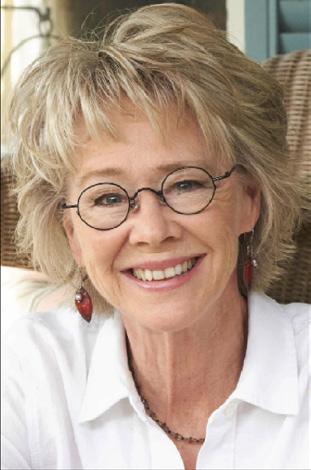
Gwenn Voelckers is the author of “Alone and Content: Inspiring, empowering essays to help divorced and widowed women feel whole and complete on their own.” She welcomes your thoughts on this column as well as topic suggestion for future essays at gvoelckers@rochester. rr.com.
Acheap cavity-fighting liquid typically used to treat sensitive teeth appears to work as well as dental sealants in preventing tooth decay, a new study finds.
A single treatment of either silver diamine fluoride (SDF) or a typical dental sealant prevented 80% of cavities for four years among thousands of New York City elementary schoolchildren, researchers report March 4 in the journal JAMA Pediatrics.
The treatments also kept 50% of existing cavities from worsening during the same period of time.
The study “reaffirms that both sealants and SDF are effective against cavities,” said lead researcher Ryan Richard Ruff, an assistant professor of epidemiology and health promo-
tion at the NYU School of Dentistry.
SDF's advantage is that it can be applied by school nurses as well as dental hygienists, potentially expanding the number of kids who could receive such protective care while in class, Ruff said.
“Nurses may be an untapped resource for addressing oral health inequities,” Ruff added in a university news release. “Our results suggest that nurses can effectively provide this preventive care, which could dramatically improve access, given the role of school nurses and the size of the nursing workforce.”
The U.S. Centers for Disease Control and Prevention promotes and funds school-based sealant programs, in which dental professionals

visit kids at elementary schools to apply a thin, protective coating that hardens teeth and protects them against decay, researchers said in background notes.
The CDC estimates that each tooth sealed saves more than $11 in dental treatment costs. Applying sealants at school to the nearly 7 million low-income children who lack such dental care could prevent more than 3 million cavities and save up to $300 million in dental costs.
Unfortunately, these programs can only succeed in preventing cavities if there are enough health professionals available to apply the cavity-fighting substances.
For the study, 4,100 New York City kids received either SDF or a sealant at their elementary school twice a year. More than a quarter of
the kids had untreated cavities at the start of the study.
Sealants were applied by dental hygienists, while SDF was applied by either a dental hygienist or a registered nurse. All operated under the supervision of a dentist.
“Most research shows that SDF can stop a cavity from progressing further. Our study demonstrated that SDF can prevent cavities from happening in the first place,” said researcher Tamarinda Barry Godín, a research scientist at NYU College of Dentistry.
What's more, kids who had SDF applied by either a dental hygienist or a registered nurse did just as well, suggesting that school nurses could play a crucial role in cavity prevention programs.

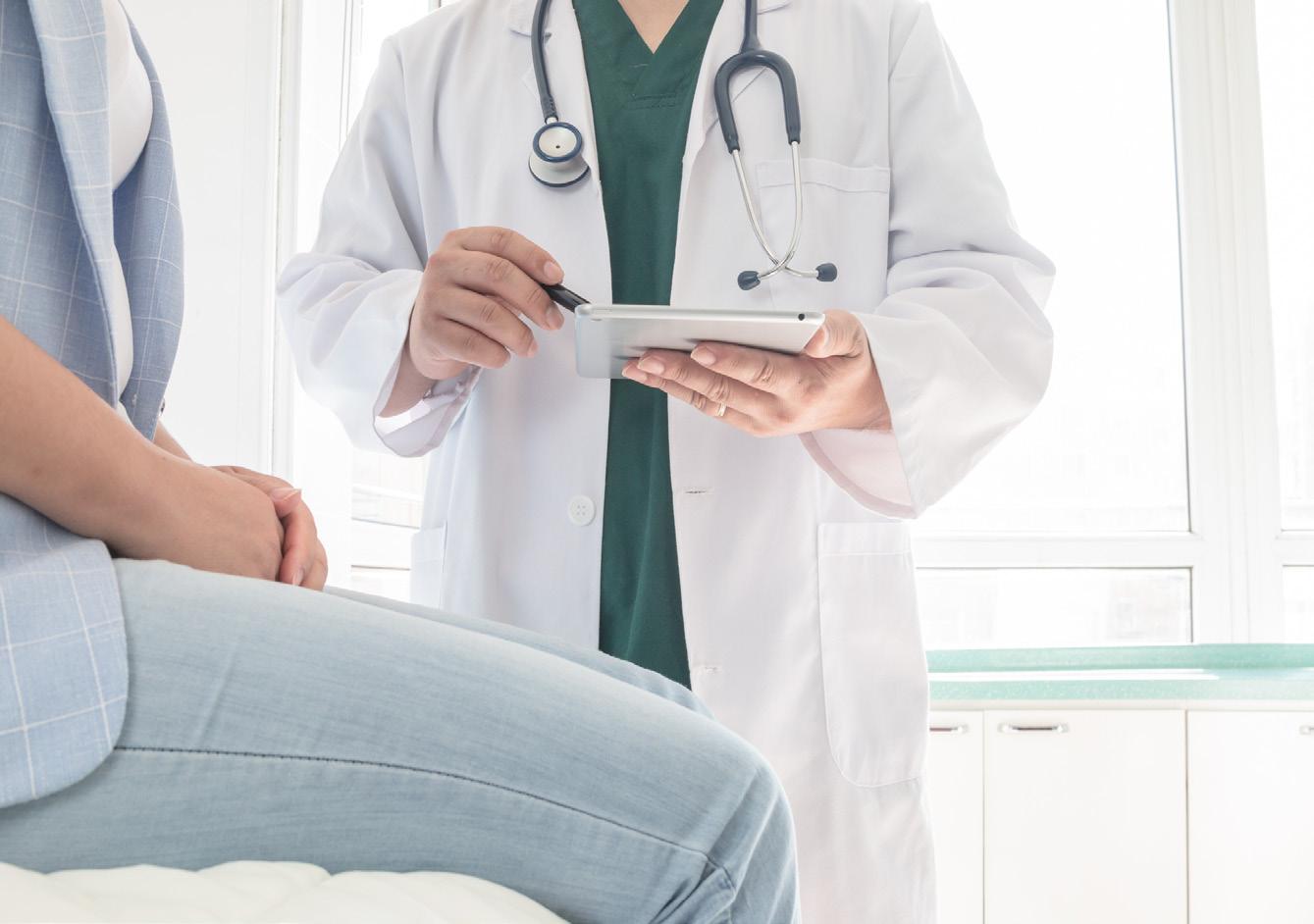


Say hello to a more convenient way to stay healthy in Oswego County. ConnnextCare offers a comprehensive set of services - family and internal medicine, pediatrics, dentistry, psychiatry, substance use disorder treatment and social work all under one medical group. Patients within our network can visit any of our seven locations at any time.
ConnextCare also offers medical, dental and mental health services at eight School Based Health Centers in five Oswego County school districts.
WALK-IN APPOINTMENTS NOW AVAILABLE IN THE PULASKI OFFICE
MONDAY - FRIDAY 7:00AM - 6:00PM
Central Square (315) 675-9200 Fulton (315) 598-4790 Oswego (315) 342-0880 Pulaski (315) 298-6564 Parish (315) 625-388 Phoenix (315) 695-4700 Mexico (315) 963-4133
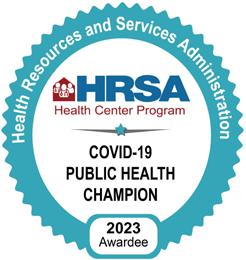
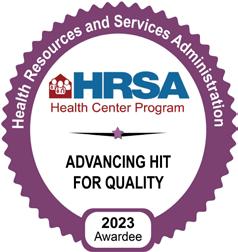
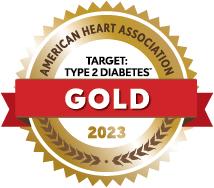

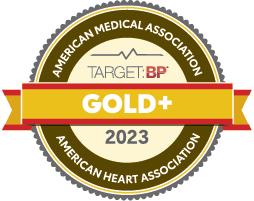
Summer is coming and lots of people will be heading outdoors.
I’ve been a search and rescue volunteer for 20 years and one focus of my search team (Tompkins County Search and Rescue) is public outreach to help keep people safe when hiking, biking, birding, hunting, fishing, taking photos, camping or otherwise enjoying the outdoors.
We are fortunate that New York state has so much forested land. 62% (18.6 million acres) of our 30 million acres is forested.
Check out the DEC website https://dec.ny.gov for information about state forests and wildlife management areas.
The New York State Parks, Recreation, and Historic Preservation website https://parks.ny.gov/parks/ provides information about these areas. In addition to state-owned land, our state has land trust lands, local parks, trails and more.
Recently our search team hosted a public training about hiker safety. The information applies to any form of outdoor recreation. This article will touch on some highlights from that seminar.
The first step is planning. Learn the rules for where you will be hiking and obtain maps or guidebooks. When you make a plan, be sure to tell a responsible adult where you are going, when you are going and when you plan to return. Many wildlands lack cell phone service, so you may not be able to call for help. When you leave your itin-
erary with friends or family, they can call for assistance if you don’t return as planned.
Who should you — or your friends and family — call in an emergency? If someone is injured and needs immediate assistance, call 911. For less urgent assistance, such as lost but uninjured, and you have cell service, you can call DEC dispatch at 833-697-7264 (833-NYS-RANGERS). Stop and add that to your cell phone now.
Check the weather forecast before heading out. This will enable you to dress properly. Consider postponing your trip if bad weather is forecasted. Also check trail conditions. Websites for this information include:
• Adirondacks www.dec.ny.gov/ outdoor/7865.html
• Catskills www.nynjtc.org/content/catskill-trail-updates
• Finger Lakes www.fltconference.org/trai//go-hiking/trail-conditions/trail-conditions-notices/
Some people use apps like AllTrails where hikers can add trail conditions. Be aware that crowd sourced information should be taken with a grain of salt.
Hike with a partner or group. Know your physical capability so that you don’t exceed your abilities. Pay attention to the time of sunset so that you are not caught unprepared in the dark.
Learn to use a map and compass. Electronic devices like phones and GPS receivers can fail, run out of power or be out of cell coverage.
What should you wear? Synthetic moisture-wicking fabrics help
OCWA — Central New York’s Water Authority — recently won the “Best Tasting Drinking Water” in New York state competition held by the American Water Works Association, New York Section (NYSAWWA). OCWA received the award in April at NYSAWWA’s annual event in Saratoga.
The Best Tasting Drinking Water contest involved a panel of judges who blind taste tested and graded each competing utility’s submission from across New York state based on taste, odor, color, clarity, mouthfeel, and aftertaste.
OCWA took first place for its Otisco Lake water and will now advance to a national competition.
The Otisco Lake Water Treatment Plant (WTP), located in Marcellus, treats, tests, and delivers water from
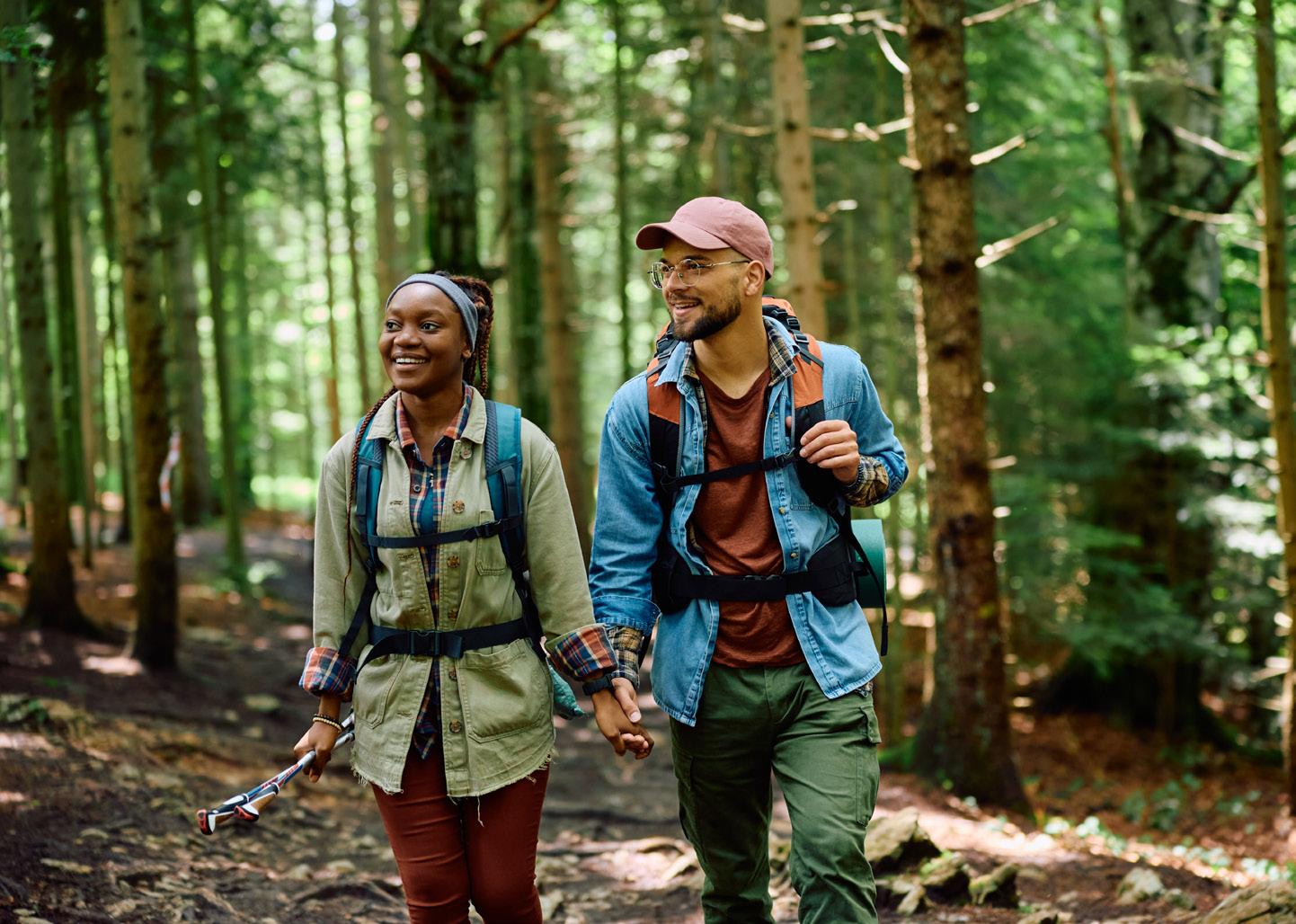
keep your skin dry (sweat happens) and help regulate body temperature in both hot and cold weather. Avoid cotton which holds moisture. Plan to dress in layers so that you can add or remove clothing to stay comfortable. Even in summer bring warm clothing in case you are caught out after dark when the air cools. Bring raingear, even a simple poncho, because you never know when rain could sneak in. Wear appropriate footwear and be sure to break in boots before a long trip. At the end of a long day of walking, your feet may swell, so shop for footwear at the end of the day. Light colored clothing will show ticks better than dark clothes. Hats can keep you warm or provide sun and rain protection.
Other items to pack include water, snacks, a first aid kit, whistle, extra clothing, flashlight/headlamp with spare batteries, sunscreen, insect repellant, pocketknife, and a sturdy garbage bag (such as a contractor bag) for emergency shelter or to haul out litter.
In remote areas also bring firestarting materials, a space blanket or bivy sack, a method to purify water, and a safety vest or bright-colored clothing.
If you see a trail register at the
trailhead, sign in. So many people skip this crucial step! Trail registers provide vital information to searchers in the event you are lost. Sign out when you leave.
What if you become lost? Stop and keep calm. Try to assess your location. Can you hear vehicles? Can you see familiar landmarks? If you have the skill to navigate out of the woods with your map and compass, do so. If you have cell service, call DEC the dispatch number. If you don’t have cell service, if possible move to a nearby area which you are likely to be visible to searchers on the ground or air. If you have something brightly colored, wear it or place it in a conspicuous spot.
Have fun out there but stay safe.
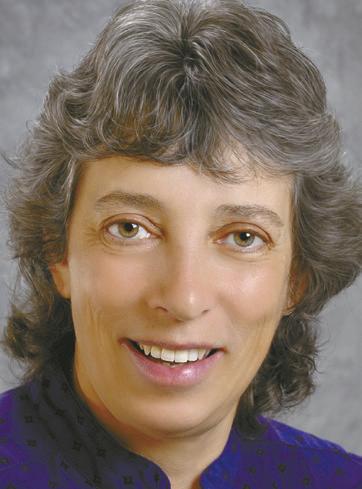
Otisco Lake to OCWA customers mostly located in the southern and western half of Onondaga County. Last year, OCWA won the contest for its Lake Ontario water.
“We are honored to win this prestigious competition as it is a credit to all OCWA employees who work hard each day to ensure the communities we serve have clean, fresh, and reliable water to use and drink. It is even more exciting to have won this contest two years in a row,” said OCWA Executive Director Jeff Brown.
Besides the Best Tasting Drinking Water award, NYSAWWA presented OCWA with the 2024 New York State Safety Award for demonstrating outstanding initiative around safety improvement and injury prevention.
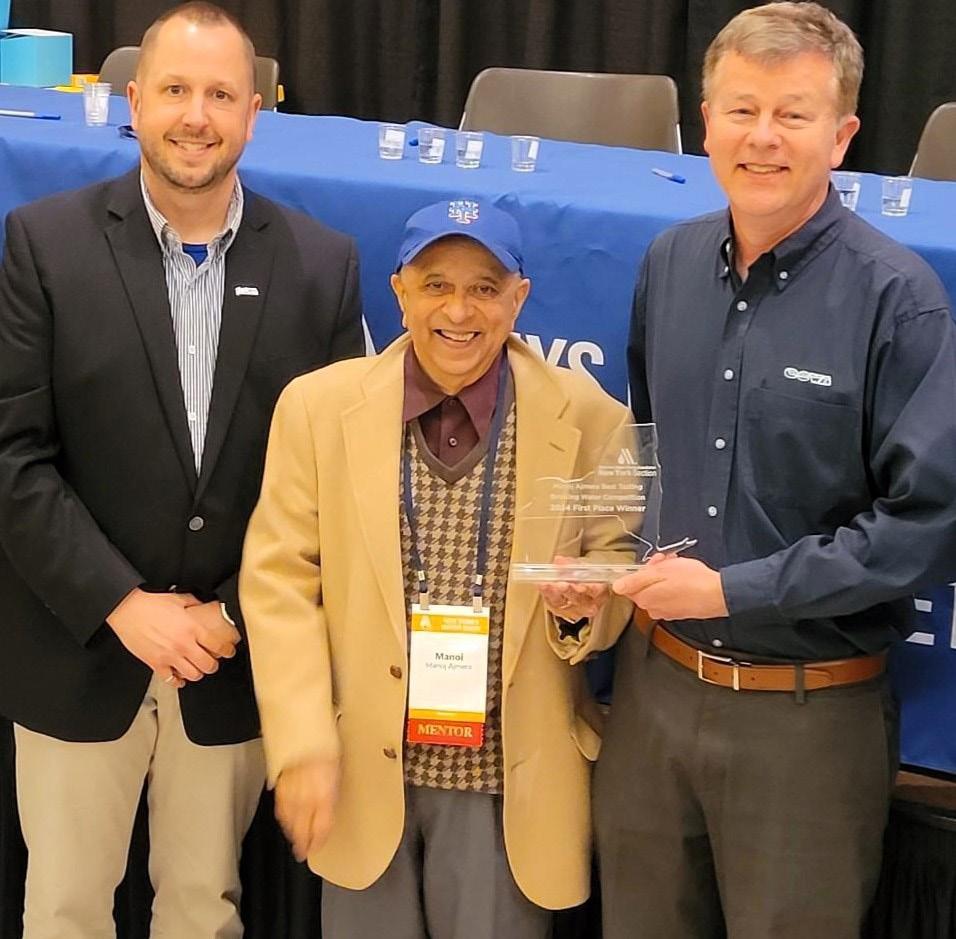



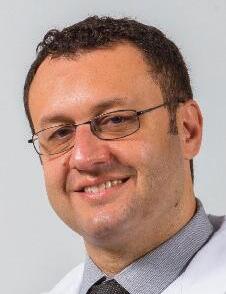
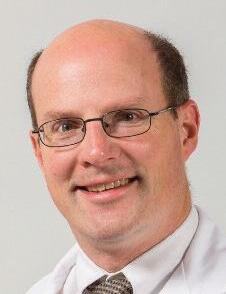
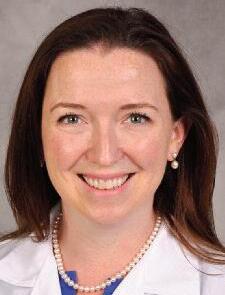
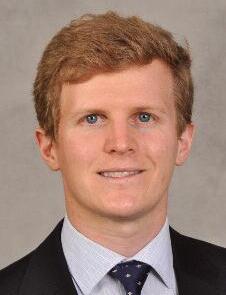
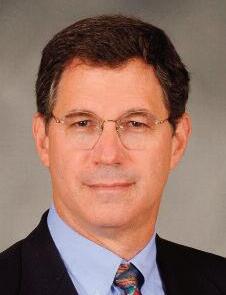





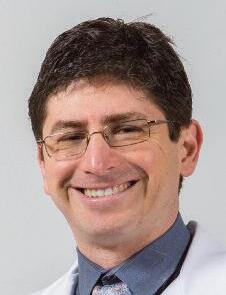
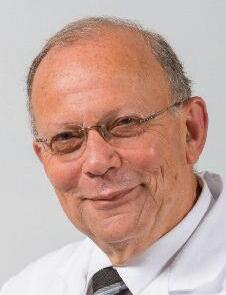

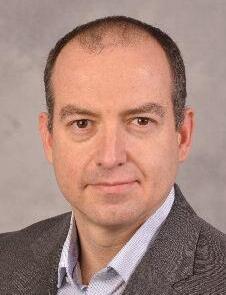

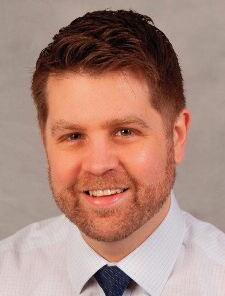

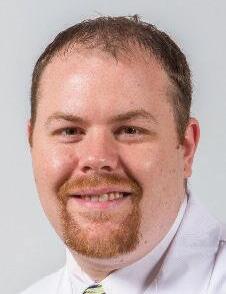

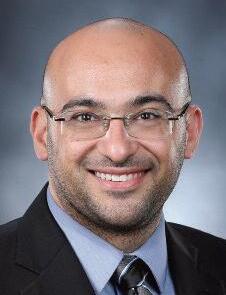
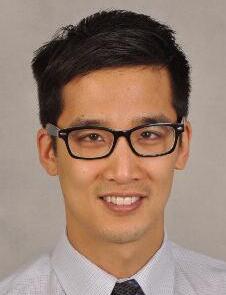






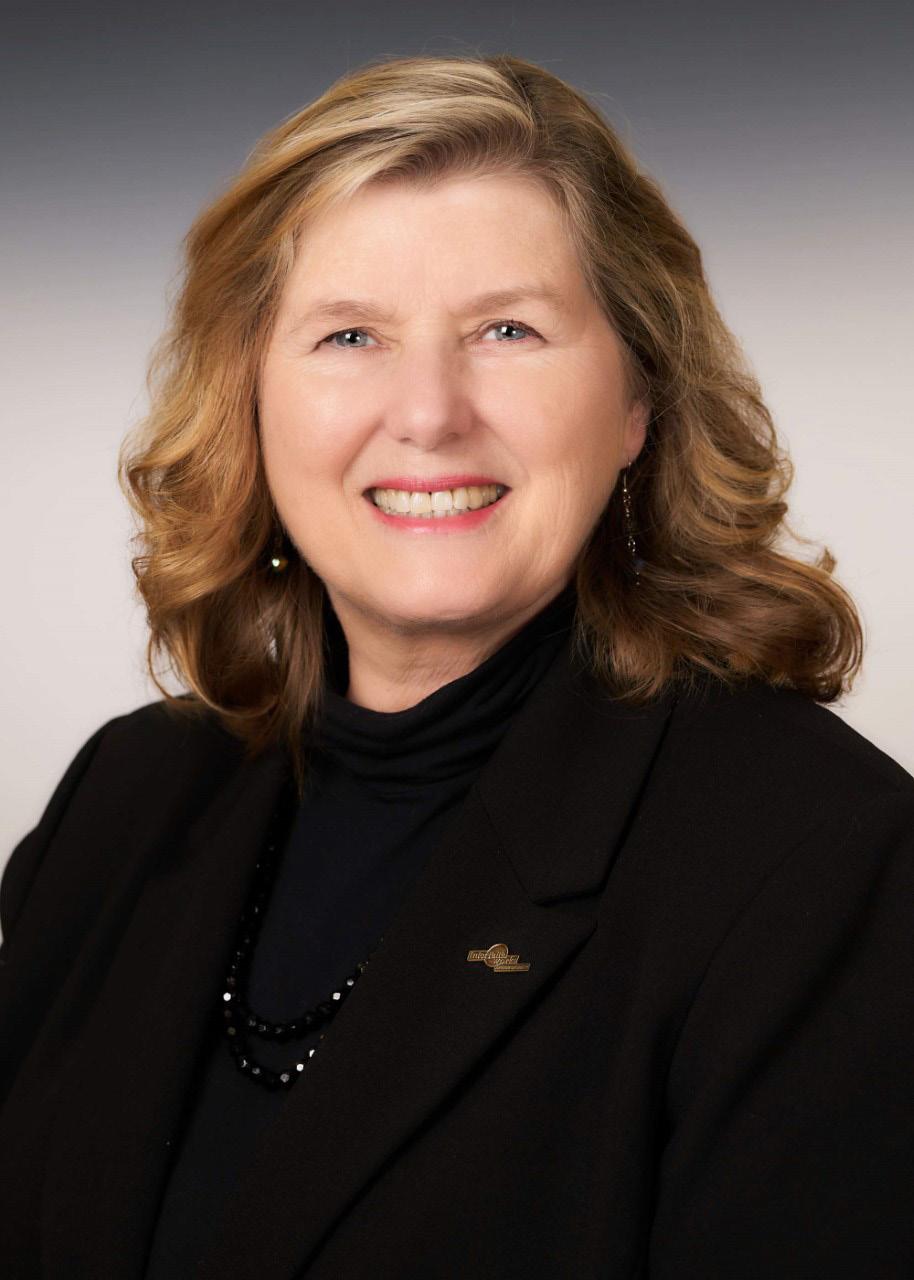
President and CEO of InterFaith Works explains how the nonprofit helps elders stay socially connected
By Mary Beth RoachQ: What is the purpose or the mission of the agency?
A: InterFaith Works affirms the dignity of each person and every faith tradition builds racial and religious equity and creates bridges of understanding among us.
Q: I wanted to focus on the agency’s programs that promote healthy aging. Can you explain these programs?
A: The Healthy Aging Center is dedicated to working on behalf of elders who may have become socially isolated or who are in situ-
The Oswego County Prevention Coalition (OCPC) recently announced the distribution of free cannabis lock-bags to residents of Oswego County.
The lock bags are designed to offer Oswego County residents a safe way of storing their legal cannabis products to prevent them from being accessed by children.
This initiative is made possible through a grant from the New York State Office of Addiction Services and Support (OASAS), as part of the OCPC’s adult use cannabis grant.
With the legalization of cannabis in New York state in 2021 as well as the inevitable opening of dispensaries within Oswego County, there’s a growing concern about accidental ingestion, particularly among children.
ations where they don’t have access to the resources that this community offer for healthy aging. We’re not a medical-based organization in that sense of having medical people come into your home. We’re more focusing on helping older adults stay socially connected and age with dignity.
Q: Can you list what those programs are?
A: We started with a volunteer companionship and friendly-visit program for elders who were living in their own homes and desired to stay at home, but needed that little extra social and [help with] small tasks. It was a federal program started under the Kennedy administration.
The companions are elders who want to stay active as volunteers, and they receive a small stipend to help them to support their lives because they’re low-income people. This small stipend, because it’s in this federal program, does not affect their Social Security. The companions receive training every month. They do things like fall prevention, how to watch for dementia or how to watch if somebody’s being taken advantage of financially. Then they can report back to us if they see something and we can get some of the agencies in town that are professionals to lend a hand to people.
What we found in our nursing homes, here and across the nation, 65% of the elder residents don’t have a regular visitor. We started to do one-to-one visiting in area nursing homes. The minimum requirement was that they [visit] once a week. The clients don’t pay anything.
Q: Any other similar programs?
A: We have a respite program for family caregivers. We can have one of the senior companions come and visit your loved one. One of the things we realized during COVID-19 is that many elders’ children had set them up with a computer or a smartphone, but they didn’t know how to use it. So, when it was possible for people to start going into people’s homes with masks and all the safety factors, we started doing digital literacy training for the elders on how to use
their devices. It has mushroomed into a digital inclusion program for elders. Now we’re working in a lot of the senior housing and in some of senior living facilities with volunteers. We’ve built a curriculum with the help of Spectrum. Spectrum also provided some grants where we were able to get tablets.
We were able to partner with the County of Onondaga Office for Aging and got a neighborhood navigator. The person is an employee of InterFaith Works and can find elders in the community who don’t know that there are services for them and get them connected.
Q: How about seniors who are immigrants?
A: A program that grew before COVID-19 started is the conversational English program for older adults. We want to think about it not only who needs services but also through racial and immigrant lenses. We saw that many older refugees have come to the U.S. and have been reunited with their younger family members, but often didn’t get the services that younger refugees get. Some of them were too old for jobs, but they were united with families and ended up doing a lot of childcare while the younger adults went out and started working. We started a conversational English program for older adults that also includes field trips around the community.
Q: How would somebody avail themselves with these services and or volunteer?
A: They can call our phone number, 315-449-3552. The director is Lori Klivak and her extension is 109.
Q: Are all of the programs you mentioned free of charge to the clients?
A: Yes, there is no charge for our services.
Q: How many clients does your Healthy Aging Center serve?
A: The Center for Healthy Aging served 900 people last year. We expect it will be a greater number by year end this year due to the expansion of programs.
In 2019, the Upstate New York Poison Center reported receiving seven calls related to accidental ingestion. In 2023, the number skyrocketed to 211.
“Ensuring the safety and well-being of our community members, especially our children, is a primary goal of the coalition,” said Travis Bulluck, community coalition manager at the Oswego County Prevention Coalition. “By providing free lock bags for cannabis storage, we aim to empower individuals to take proactive measures to prevent accidental ingestion and promote responsible cannabis use.”
To obtain your free lock bag or to receive more information about cannabis safety, please contact Travis Bulluck via email at Oswegocoun-

tyoasascoaliton@gmail.com or by phone at 315-529-0360.
In addition to the distribution of lock bags, the Oswego County Prevention Coalition encourages community members to learn more about the coalition and get involved in its efforts to promote drug-free commu-
nities in Oswego County. To learn more or to become a member, please visit www.ocpreventioncoalition.org. The coalition welcomes additional members and values community feedback as it continues its mission to create a safer and drug-free environment for all residents.
Have you wondered if a sleep lab could benefit your slumber?
Robert Newman, clinical coordinator of the night shift at St. Joseph’s Sleep Lab, offered an inside glimpse of what happens inside the walls of a sleep lab and how patients can benefit.
First comes a referral from a physician. Discussing symptoms like daytime sleepiness or suspected sleep apnea or restless leg syndrome can help the primary care provider determine if a referral is in order.
Patients undergoing a sleep study in the lab stay there overnight in a room set up like a hotel room to encourage good rest. They wear electrodes and leads head to toe so that the provider can take readings to study later.
“A lot of folks ask when they’re coming in, ‘Do people sleep here
during the day?’” Newman said. “And it’s yes. It’s almost a 24-hour operation, minus two hours between shifts.”
About 40% of the sleep studies happen in patients’ homes and about 60% are in the lab. The location is largely driven by insurance.
In a couple of weeks, the results are compiled and the provider can meet with the patient to go over the results and as needed, pursue treatment.
Sleep apnea — a common complaint — is either obstructive apnea, where a patient tries to breathe but experiences an anatomical blockage or central apnea, where the brain fails to consistently signal the body to breathe. Sleep studies can determine whether they’re trying to breathe or not. Typically, obstructive sleep apnea is linked to excess weight, but people of any weight can experience
central sleep apnea.
A continuous positive airway pressure machine helps. The CPAP machine works by pushing air into the back of the throat via a breathing mask.
“How high the pressure goes is based on when we start to see the apnea clear up,” Newman said.
CPAP is 90% successful for improving sleep in people to whom it is prescribed.
For patients who struggle with CPAP, a newer treatment, hypoglossal nerve stimulation, involves implanting a device under the skin on the right side of the upper chest to stimulate a nerve to push the tongue forward while sleeping. That prevents sleep apnea for those with obstructive apnea.
Providers may also recommend losing weight, exercising and better sleep positions. Sleeping on the back promotes sleep apnea, but pillows can help encourage side sleeping. Elevating the head of the bed helps with apnea.
Rapid eye movement (REM) behavior disorder may also hamper sleep.
“It’s for folks doing something a little odd, like acting out their dreams,” Newman said.
Patients may have narcolepsy —
spontaneous and unwanted daytime sleeping — that disrupts restful sleep at night. The sensors used in the sleep lab can detect various stages of sleep to show providers how much restorative sleep patients get while resting.
With any patients struggling with sleep, sleep hygiene can improve the quality and quantity of rest.
“Sleep hygiene is a concept that a good sleep technologist tries to drum home,” Newman said.
While getting hooked up to the equipment, the technologist discusses maintaining a bedroom that is dark, cool and comfortable and wearing comfortable night clothing. The bedroom should free of stressors like clutter, bills and unfolded laundry. This area should be used only for sleep and intimacy. It also helps to limit caffeine and electronics before bedtime, as both are stimulants.
Exercising earlier in the day can and limiting napping can also promote better sleep.
“It’s so rewarding to have someone where we saw them at their worst and we can get them so their airway is open and they say they haven’t slept like that in 20 years,” Newman said.
Ambien, Lunesta, Sonata: Millions of bleary-eyed Americans turn to this class of so-called "Z-drugs" to get restful sleep.
But how do these drugs work, and do they come with risks?
Experts at the U.S. Food and Drug Administration have issued an advisory to boost awareness about the meds.
All of these medications — generically known as zolpidem (Ambien, Ambien CR, Edluar and Zolpimist), eszopiclone (Lunesta) and zaleplon (Sonata) — work by putting the brakes on brain activity, allowing you to drift off to sleep.
But the FDA warns that Z drugs also come with risks, most notably upping your odds for "complex sleep behaviors" — things like sleepwalking, sleep driving, sleep cooking or even taking other medicines.
"The FDA has received reports of people taking these insomnia medicines and accidentally overdosing, falling, being burned, shooting themselves and wandering outside in extremely cold weather, among other incidents," the agency noted.
You might not even recall any of these behaviors occurring once you reawaken, according to the FDA.
The onset of complex sleep
While more than half of Americans say they would feel better with more sleep, only 42% say they are getting as much shut-eye as they need, a new poll finds.
"This is nearly a reversal of the figures last measured in 2013, when 56% of Americans got the sleep they needed and 43% did not," the poll authors wrote.
Women under the age of 50 are particularly tired, the Gallup poll released in April showed. The latest tally finds only 36% of women say they get enough sleep, compared to 48% of men.
Exactly how much sleep are folks getting?
Only 26% said they got eight or more hours, while just over half (53%) reported getting six to seven hours. Twenty percent said they got five hours or less, a jump from the 14% who reported getting the least amount of sleep during the 2013 poll.
The poll doesn't delve into why
so many Americans are coming up short on sleep.
But what's notable, according to Gallup senior researcher Sarah Fioroni, is the shift toward more Americans thinking they would benefit from more sleep and also the jump in the number of those saying they get five hours of sleep or less a night.
“That five hours or less category ... was almost not really heard of in 1942,” Fioroni told the Associated Press. “There's almost nobody that said they slept five hours or less.”
In recent years, there also has been “this pervasive belief about how sleep was unnecessary — that it was this period of inactivity where little to nothing was actually happening and that took up time that could have been better used,” Joseph Dzierzewski, vice president for research and scientific affairs at the National Sleep Foundation, told the AP.
It's only relatively recently that the importance of sleep to physical, mental and emotional health has
behaviors tied to Z drug use is also unpredictable. For some, the behavior can begin after the first dose, while for others it might begin much later into use.
Many sleep medicines can also cause daytime drowsiness, so avoid driving and other hazardous tasks under those circumstances. Some other tips for safe use of Z drugs: Always discuss the risks and benefits of these medicines with your doctor, and read the Patient Medication Guide before you start taking the drug

Always take the medicine at the recommended dose, and don't use a Z drug in combination with other sleep medications (including OTC meds)
If you discover that you've been engaging in any complex sleep behavior, stop taking the drug immediately and contact your doctor Don't drink alcohol while using a Z drug because this will make side effects more likely
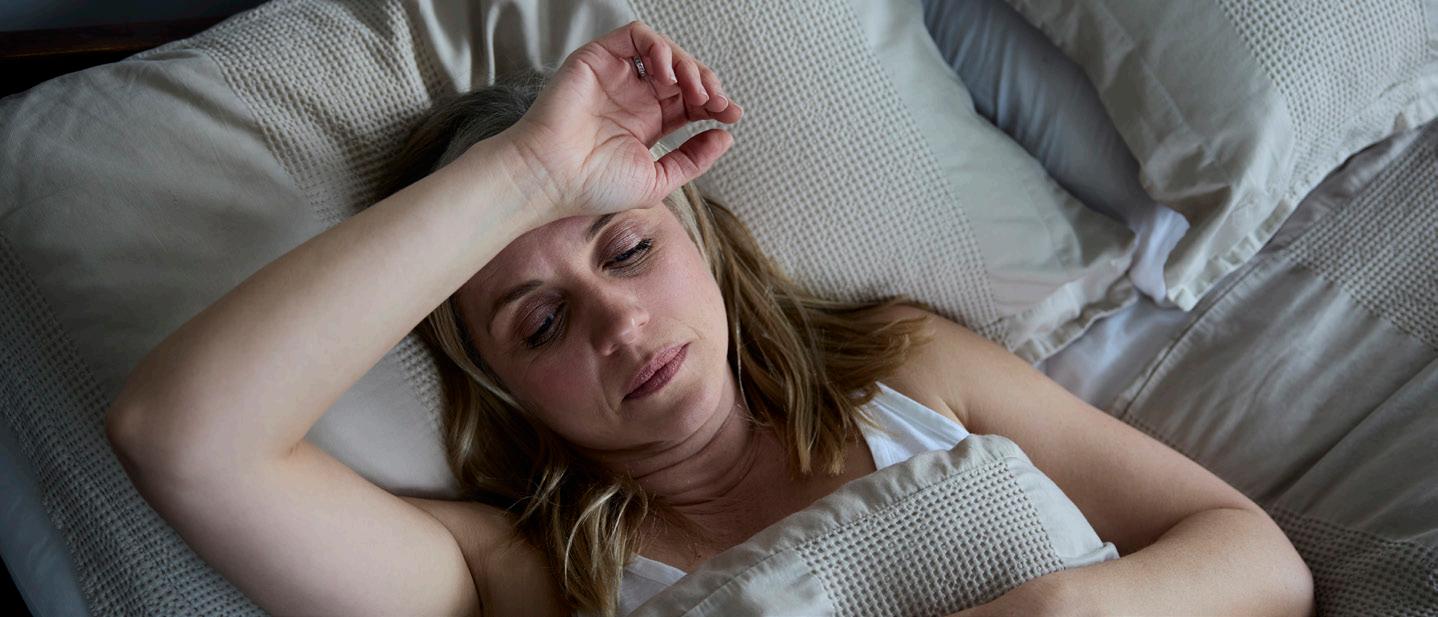
taken hold, he noted.
So why are Americans staying awake too long? One likely reason is cultural, as millions in this country place a premium on industriousness and productivity, experts said.
“It has been a core part of American culture for centuries,” Claude Fischer, a professor of sociology at the graduate school of the University of California Berkeley, told the AP. “You could make the argument that it ... in the secularized form over the centuries becomes just a general principle that the morally correct person is somebody who doesn't waste their time.”
In her research in rural American communities over the years,
Washington State sociology professor Jennifer Sherman says a common theme among people she interviewed was the importance of having a solid work ethic.
A key component of American cultural mythology is the idea of being “individually responsible for creating our own destinies,” she told the AP. “And that does suggest that if you're wasting too much of your time ... that you are responsible for your own failure.”
While the poll shows a broad shift in sleep patterns over the past decade, living through the pandemic seems to have also significantly shifted people's sleep patterns, the National Sleep Foundation says.
Allergies aren’t just about pollen in the spring as the summer can cause just as much havoc on the sinuses. They can be triggered by foods, medications, insect stings and more.
Allergies occur when a person’s immune system reacts to a substance in the environment. These substances are known as allergens and can be found in dust mites, pets, pollen, insects, ticks, molds, foods and medications.
“Untreated allergies can contribute to the development of sinus infections and ear infections. They can worsen asthma symptoms as well as eczema and psoriasis,” said physician Nicholas Groch, a board-certified otolaryngologist at Lakeshore ENT, which is part of Oswego Health.
1.Weed pollen, mold spores, air pollution: Summer allergy culprits
When a person comes into contact with a particular allergen, the body reacts through constant sneezing, runny nose, watery eyes, breaking out in hives, eczema and difficulty in breathing, said Groch.
Around 31.8% of adults in the United States had a seasonal allergy, eczema or food allergy, according to the Centers for Disease and Prevention. This includes 25.7% with a seasonal allergy, 7.3% with eczema and 6.2% with a food allergy. There are more remedies for seasonal allergies than for any other type of allergy.
In the spring, many flower buds and trees are blooming, which affect millions of people who have seasonal allergies which can result in sneezing, congestion, a runny nose and other bothersome symptoms. In the summer, pollen from grasses and weeds, mold spores and air pollution cause issues.
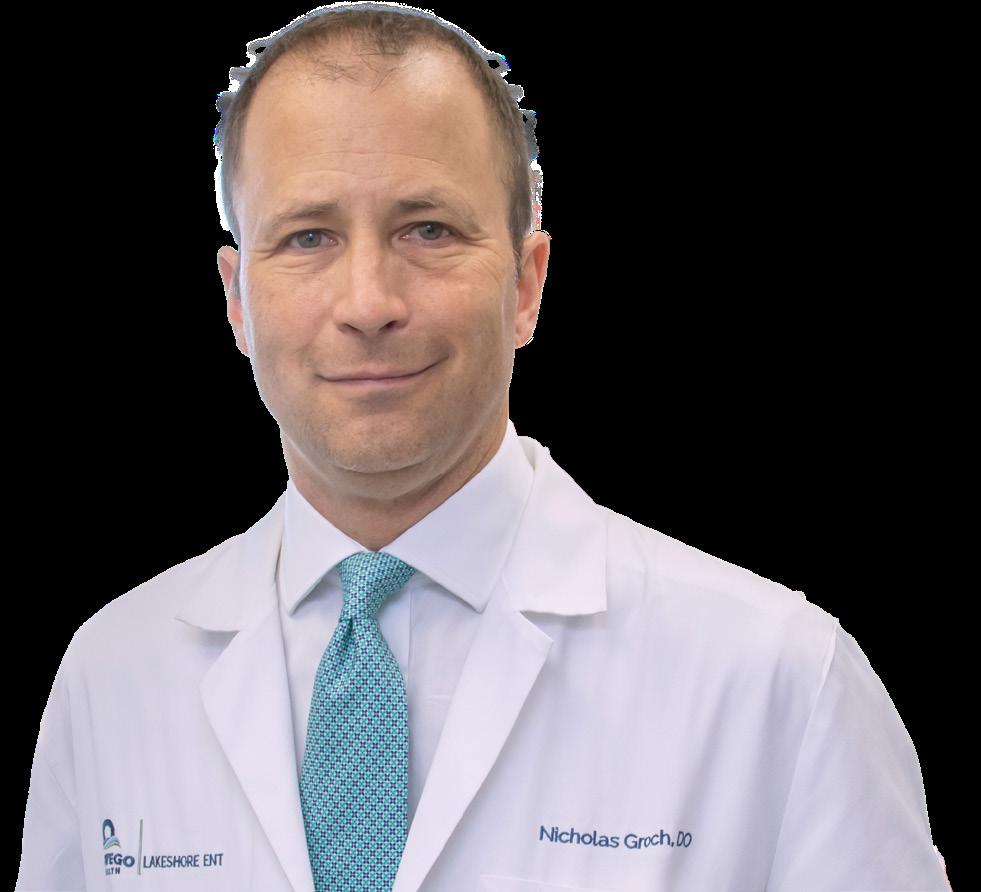


“Symptoms are typically the same but the cause can be different with springtime allergies being more likely due to grass and tree pollen, but summer allergies also being due to weed pollen,” said Groch.
2.Allergies can be lifethreatening
Whether it’s home remedies or misinformation, experts say they hear common misconceptions. One of them is that allergies are not a serious threat. Anaphylaxis, a severe allergic reaction, can be fatal if not treated promptly. In addition, not all allergies are the same. Allergies vary widely in their symptoms, triggers and severity. Some people may have seasonal allergies to pollen, while others may be allergic to specific foods, medications or insect stings.
“One common myth that I hear from patients is that allergies are not a big deal,” said Melanie Groch, an ear, nose and throat doctor at Lakeside ENT — and the wife of Nicholas Groch. “Allergies can worsen a person’s quality of life by making them feel sick, tired and irritable all the time. In addition, severe allergies
can cause anaphylaxis, which can be life-threatening.”
She said another myth revolves around the idea that children don’t need to get allergy tested. Allergy testing is safe for all ages and helpful to know what allergens to avoid.
Seasonal allergy symptoms flare up when pollen exists in the air. It’s essential to check how much pollen exists in the air and adjust your behavior from there. If the pollen counts forecasted are high, start taking allergy medications before symptoms hit you. Closing doors and windows during the day becomes another step when pollen problems occur and especially avoid outdoor activity in the early morning when the counts are at their peak.
“The economic impact of allergic rhinitis is significant,” said Melanie Groch. “The total direct medical cost of nasal allergies is about $2.4 billion annually in the United States, with almost half of this cost is due to prescription medications.”
Several types of nonprescription medications help ease allergy symptoms. This includes oral antihistamines which aids and relieves sneezing, itching, stuffy and runny nose and watery eyes. Examples of antihistamines include Zyrtec Allergy, Allegra Allergy, Claritin and Alavert. Nasal sprays medications improve nasal symptoms such as Flonase Allergy Relief, Rhinocort Allergy and Nasacort Allergy 25 hours. Although these can help stop nasal symptoms for a short term, talk to your health provider for longer term relief options. Experts still say that if you have chronic allergies, you should see a professional.
“There are many over-the-counter options and prescription nasal sprays,” said Melanie Groch. “There are also oral antihistamines, sinus rinses, allergy shots and avoiding known allergy triggers as options.”
Having allergies doesn’t mean you have no choices. Although allergies can be a pain, you can deal with them in various ways that offer relief. Experts suggest reducing your exposure to allergy triggers, which means staying indoors on dry and windy days. Figure out the best times to venture outside with rain being your friend because it helps clear the pollen from the air. Also try avoiding lawn mowing, weed pulling and other gardening chores that can stir up allergens. In addition, get in the habit of removing clothes worn outside and shower to rinse any pollen from your skin and hair.
“Allergies can be diagnosed with an allergy skin test or a blood test looking for antibodies to different allergens including grass, tree and weed pollen, animal dander, molds, dust mites and foods,” said Nicholas Groch.

Now that peak hot dog season is in full swing—with Americans consuming 7 billion hot dogs from Memorial Day to Labor Day—it’s the perfect time to think outside the hot dog bun and give plant-based hot dogs a try.
Let’s start with the good.
Most vegetarian hot dogs are an excellent source of quality protein, ranging anywhere from 6 to 20 grams. An essential nutrient with benefits above and beyond building muscles and bones and repairing tissues, protein helps with weight loss and maintenance by suppressing hunger signals, boosting metabolism and taking longer to digest. What’s more, protein’s essential role in collagen production promotes healthy skin, stronger bones and joint integrity. A final shout-out: Most plantbased hot dogs have no cholesterol, while others boast some fiber and iron.
Now, the (semi) bad.
Unfortunately, many, but not all, plant-based hot dogs are just as processed as other heavily processed foods. Translation? They may contain ingredients that could be harmful if consumed in excess, such as saturated fats, added salt and sugar and unrecognizable additives. Research indicates that eating highly processed foods can lead to weight gain and an increase in the risk of cancer, heart disease, diabetes and overall mortality. However, in contrast to some ultra-processed foods, like sodas and cookies, that are calorie-rich and nu-
trient-poor, veggie dogs balance the processing with several nutritional benefits, including fewer calories.
Finally, the beautiful.
When it comes to protein sources, the environmental benefits are clear. Pound for pound, meat has a much higher water footprint than vegetables, grains, beans or legumes. For example, 4 ounces of hamburger takes 600 gallons of water to produce while 4 ounces of tofu takes only 60 gallons. In addition, researchers estimate that 15% of global greenhouse gas emissions come from raising meat. Producing approximately 1 pound of protein from beef, for example, sends the same carbon emissions into the atmosphere as driving 30 miles, whereas making the same amount of tofu amounts to less than a mile. Worried about global warming? Adopt a more plant-based diet!

Anne Palumbo is a lifestyle columnist, food guru, and seasoned cook, who has perfected the art of preparing nutritious, calorie-conscious dishes. She is hungry for your questions and comments about SmartBites, so be in touch with Anne at avpalumbo@aol.com.
People who eat large amounts of ultra-processed foods have a slightly higher risk of premature death than those who mostly shun the industrially produced eats, a new 30-year study says.
Those who ate the most ultra-processed foods — an average of seven servings a day — had a 4% higher risk of death overall, and a 9% higher risk of death from causes other than cancer or heart disease.
These higher risks of death “were mainly driven by meat, poultry, seafood-based ready-to-eat products, sugar and artificially sweetened beverages, dairy based desserts, and ultra-processed breakfast foods,” wrote the team led by senior researcher Mingyang Song, an associate professor of epidemiology and nutrition at

1 tablespoon cumin 2 teaspoons paprika 1 teaspoon allspice 1 teaspoon cinnamon
1. In a large saucepan or soup pot, sauté onions in cooking oil over medium heat till golden. Add tofu crumbles, stir in 3 tablespoons water, cover, and cook for 5 minutes over medium-low heat. Break up any large tofu crumbles, then stir in remaining ingredients, including water, and simmer, covered, for 2 hours.
For this study, researchers tracked the long-term health of nearly 75,000 female registered nurses and nearly 40,000 male health professionals.
Ultra-processed foods are made mostly from substances extracted from whole foods, like saturated fats, starches and added sugars. They also contain a wide variety of additives to make them more tasty, attractive and shelf-stable, including colors, emulsifiers, flavors and stabilizers.
Examples include packaged baked goods, sugary cereals, readyto-eat or ready-to-heat products, and deli cold cuts, researchers said.
Mounting evidence has linked these foods to higher risks of obesity, heart disease, diabetes and bowel cancer, researchers said. However, few long-term studies have examined these products' links to a person's overall risk of death.
Read labels carefully. Calories, sodium, fat (especially saturated fat), protein, fiber and ingredients vary widely among plant-based hot dogs. So it pays to know what you are consuming. I chose Lightlife hot dogs because they had no saturated fat, less sodium than most, and a decent amount of protein.
3 tablespoons tomato paste 1 tablespoon Worcestershire sauce Plant-based hot dogs
2. Let cool for 10 minutes, then puree with a hand or traditional blender to desired consistency. Adjust seasonings; add more water if sauce seems too thick or simmer uncovered if sauce seems too thin. Serve with plant-based hot dog of choice. Note: Sauce thickens with refrigeration, so add water as needed.

Both groups took part in separate health studies that ran from the mid-1980s to 2018. Every two years, participants provided information on their health and lifestyle habits, and every four years they completed a detailed food questionnaire.
During an average 34-year follow-up period, researchers identified more than 48,000 deaths.
Although increased consumption of ultra-processed foods was linked to a higher risk of death, researchers noted that the association became less pronounced after they took a person's overall dietary quality into account.
The study found that dietary
quality had a greater influence on risk of early death than did consumption of ultra-processed foods. That could mean that eating lots of healthy whole foods might offset the detrimental effects of ultra-processed chow, researchers said.
“The findings provide support for limiting consumption of certain types of ultra-processed food for long term health,” the team concluded, adding that “future studies are warranted to improve the classification of ultra-processed foods and confirm our findings in other populations.”
In an editorial accompanying the study, experts pointed out that recommendations to avoid ultra-processed foods might give the idea that certain whole but unhealthy foods like red meat are fine to eat often.
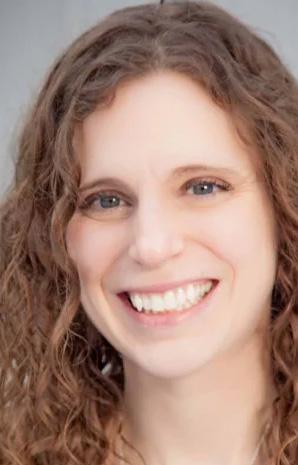
Middle school and junior high are challenging times for many adolescents.
When I was that age, I was constantly looking for ways to stand out, while desperately trying to fit in.
It was a strange time.
I think many adolescents find themselves tackling some of the most challenging questions in life. Things like: Should I be myself? Should I be like my parents? Should I be like everyone else? What will people think? When should I break the rules?
When these existential questions became too much, I did what many young people do. I sought refuge in music. Music was a way to safely try on another identity. Music was a way to connect with friends. Music made it OK to feel wildly, uncontrollably happy. Music was a safe way to let the storm rage inside me.
Music made me think and feel deep things I was otherwise afraid to feel. Music helped me survive things I thought might crush me.
I know I’m not unique in my
relationship with music. For many folks, music is critical to safely coming of age. And, as I watch my children come of age, it’s interesting to see how music is shaping and supporting their lives. It’s beautiful.
Both of my children play instruments and sing. Recently, my daughter has started participating in jam sessions. These are small sessions held at our local YMCA. They are put together by an inspired and dedicated music teacher. These sessions comprise small groups of young people of all ages. They don’t know each other. They’ve never played together before. They just sit down in a room and use what they know to start creating.
I’ve been thinking a lot about the value of these sessions. The more I ponder it, the more I realize these sessions are teaching my daughter some of the most important things she will learn in life.
These sessions are teaching her brain to do things that will be critical for the rest of her days. These jam
WE OFFER PEDIATRIC PHYSICAL THERAPY SERVICES TO CHILDREN FROM BIRTH TO TWENTY-ONE.
We will be expanding to offer pediatric occupational and speech therapy services in the future. We accept most insurances.


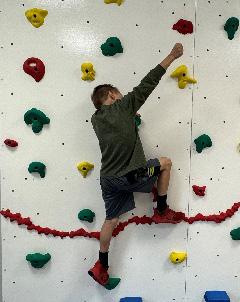
Info@shinepediatrictherapies.com
315-214-4482
www.shinepediatrictherapies.com
Local News Inc. is hiring free-lance writers to write news and feature stories for In Good Health CNY’s Healthcare Newspaper and 55 PLUS magazine.
Stories range from profiles to medical issues to nonprofit organizations. View the publications online at www.CNYhealth.com and cny55.com.
Please email resume and copies of recent published stories to editor@cnyhealth.com
sessions are brain food far beyond her understanding. Here are just a few ways music and these jam sessions are wiring my daughter’s brain to tackle some of the most difficult aspects of growing up.
You have to know the rules.
Folks who have never jammed may think a jam session is lawless. It’s quite the opposite. In order to jam, you have to know a lot of rules. Knowing some basics about chords, structure and timing are essential. My daughter knows to be able to do these sessions, she has to learn the rules of music. You have to know the fundamentals to succeed.
Spontaneity is good for the soul.
Sitting down with a group of strangers and creating something is a daring venture. How do you create something meaningful with strangers? How do you work together in spontaneity? Making something up on the spot is really important in life. Many situations in life demand improvisation. You can’t be afraid of being adaptable and changing direction on a dime. Better to learn these skills while you’re young.
When you wander off in a jam session, beautiful things can happen. Scary things can also happen. The great thing about jamming is that when you wander off and mess up, you can always get back on track. Even if you are in a spot of chaos, things come back into order. We all need that reminder.
Creating something will always feed your soul.
Sometimes we forget we are on this earth to create — love, energy, kindness, food, art, music, structure, intentions, change. Jamming is a way
to create something ephemeral. Something delicious that is intangible. When you walk out of the room, the only thing you will take with you is a little soul food.
Sometimes things fall apart.
There are many times in life where you’re building something and it crumbles before your eyes. We humans hate it when things fall apart. We take it personal and sometimes let it defeat us. Jamming is a great reminder that when things fall apart, you can stop, regroup and salvage the good stuff.
Keep trying something new until it works.
When things fall apart, you can’t go back and do the same thing you were doing. You have to change, learn and iterate. You have to reinvent your strategy until the pieces start falling into place. When you can adapt and adjust, you are better suited to weather the storms of life.
You have to read strangers.
Sure, the YMCA is a safe space for my daughter. But she still has to be in a room with young people who are mostly strangers. She has to pick up their vibes, read their body language and anticipate their next moves. She has to sense relatively intangible cues and make decisions based on these cues. All of these skills are crucial to survival, especially for a young woman. Better she refine some of these skills while doing something she loves.
The take-aways
Besides being fun, these jam sessions are fortifying my daughter’s adolescence. Having a space to be free and experimental is proving to be crucial for her formative years, even if she doesn’t see it yet. I’m glad that music is helping her find safe passage into adulthood. Where would we be without music?
U.S. births declined in 2023, marking end to post-pandemic rise
The short post-pandemic uptick in U.S. births may be over, with 2023 numbers showing a decline in births.
According to provisional data from the U.S. Centers for Disease Control and Prevention, just under 3.6 million babies were born in America in 2023, about 76,000 fewer than the year before.
It's also the lowest number of births recorded in the United States since 1979.
Demographers weren't surprised, since the U.S. birth rate had been falling for more than a decade before the pandemic.
Births did chart a slight rise in the two years after the pandemic (2021 and 2022), perhaps because some couples had put off pregnancies until the crisis eased.
However, the 2023 numbers "seem to indicate that bump is over and we're back to the trends we were
in before,” Nicholas Mark told the Associated Press. He's a University of Wisconsin researcher focused on social factors influencing health and fertility.
For American women generally, the decision to have a child seems to have shifted to later in the lifespan, as more women focus on education and careers prior to childrearing.
Birth rates have steadily fallen for women in their teens and 20s, but have risen among women in their 30s and 40s over time, the statistics show.
However, in 2023 birth rates fell across the board — they declined among women younger than 40 and were largely unchanged for women in their 40s, the CDC stats showed.
Declines in births were also observed across all races and ethnicities.
The new data was published online April 25 as a National Vital Statistics Services Rapid Release.

Historically, erectile dysfunction represents a health issue that most men older than 45 face to an extent.
But in recent years, the number of cases of ED in younger men has increased.
According to the multinational Men’s Attitudes to Life Events and Sexuality (MALES) study published by the National Institutes of Health, about 8% of men aged 20-29 and 11% of men 30-39 have ED.
“The Massachusetts Male Ageing Study determined that at approximately 20 years of age, 20% of men will complain of some form of ED — but this covers mild, moderate and severe [cases]. At 30 years of age, it is 30%, and so on.”
Compared with previous cohorts, more young men are contacting a healthcare provider to treat their ED, according to several studies. But does this mean that more have ED or that they feel more comfortable present-
ing with ED at their doctor’s office than the previous generation?
“We can treat ED. Most guys do not need surgery and have a good response with oral medication,” said physician J. C. Trussell, urologist with Upstate Medical University. “If the patient is young, they won’t need it forever once they get out of the situation causing stress.”
He explained that because stress slows down the reproductive path, men have trouble getting and maintaining erections. Trussell has observed couples who want to have a baby typically succeed despite ED once they manage their stress. Cruelly, stress can cause ED and ED can fuel stress — a vicious cycle.
ED at young age can indicate heart problems. Blood vessels in the penis are 1 to 2 milimeters in diameter, compared with coronary arteries, which are 3 to 4 milimeters and carotid arteries, which are 5 to 7 milimeters. This means that ED in
It’s not uncommon for men to marry younger women. But an age gap of 16 or so years may offer surprising benefits.
A study by German demographer Sven Drefahl indicates that a man who’s 50 and marries a woman 16 years younger is 4% less likely to die by the end of the year than those who marry a contemporary. By contrast, women who are 16 years older than their husbands are 40% more likely to die by the end of the year. Drefahl’s study doesn’t indicate why older wives die sooner. Perhaps women who marry younger men don’t mind defying societal norms (since women typically don’t marry younger men) and also are more likely to engage in risky behavior. They may face isolation as their “unusual”
age difference cuts them off from other people who judge them for their decision. The benefits afforded the older party don’t seem to apply when it’s the woman who is older.
It makes sense that a younger wife can mean for the older husband a longer life. The matter may lie in the positive changes she brings to his life. If this is a second wife, she may put some wind in his sails after the death or divorce of a previous wife. Change can be stimulating. He may become more social by meeting her young, dynamic friends—people who think differently than his contemporaries. Engaging in socialization with new people helps foster greater longevity.
A younger wife can bring fresh new ideas to someone who is becom-
young men can indicate heart disease is present also. Numerous studies report that cardiovascular disease is increasing among young adults because of poor diet, unmanaged stress and lack of exercise.
Trussell also said that injuries to blood vessels supplying the penis can lessen blood flow to it and thereby hamper erections.
Physician Ryan Sidebottom, urologist with Auburn Community Hospital, also views ED as a multifaceted issue. In addition to greater reporting and the psychological components affecting young men, Sidebottom noted that “we’re seeing more early onset diabetes, metabolic syndrome and obesity. It can affect vascular health and hormonal health and that can affect erections.”
He said that essential to any exam involved ED is a general medical history, medication review, lab work and addressing any metabolic issues. For example, men who
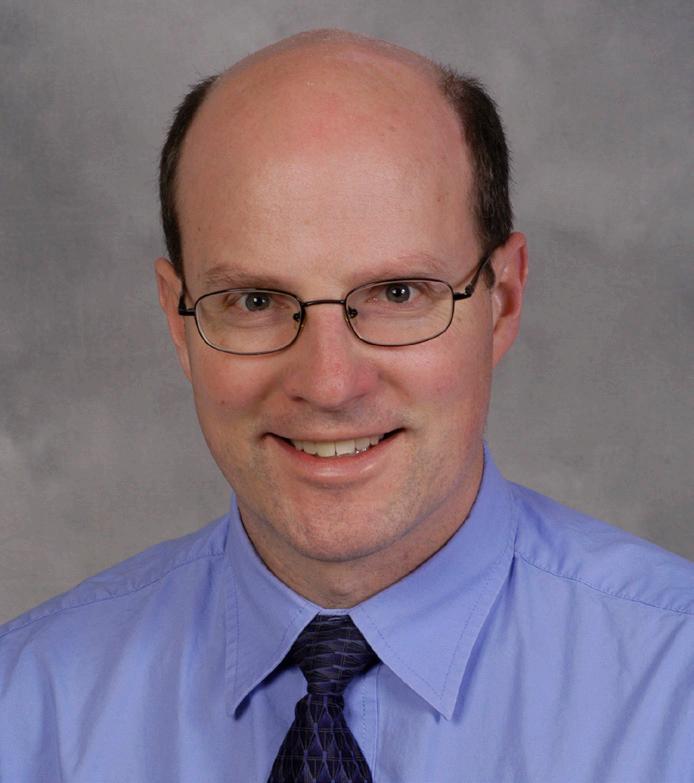
are diabetic need to address weight and control their blood sugar levels. Those with low testosterone may seek replacement therapy. Smoking cessation can help increase blood flow throughout the body.
For many men, using medication can help achieve better erections. Sidebottom noted that phosphodiesterase inhibitors (PDE 5) help by stimulating the nerve going to the penis to increase blood flow and with dilation of the penis.
“If this fails, there are further options for ED,” Sidebottom said. “There are injections that can go into the blood vessels to the penis. There are tablets that can be placed in the urethra that can cause dilation into the penis. And vacuum pumps. They can help draw venous blood into the penis. And surgical interventions with penile prostheses. It replaces the chambers that fill with blood with chambers attached to a pump to fill the balloons to fill with water as desired. There is a very high satisfaction rates. It’s a big step and a last step in the process. But it does work very well.”
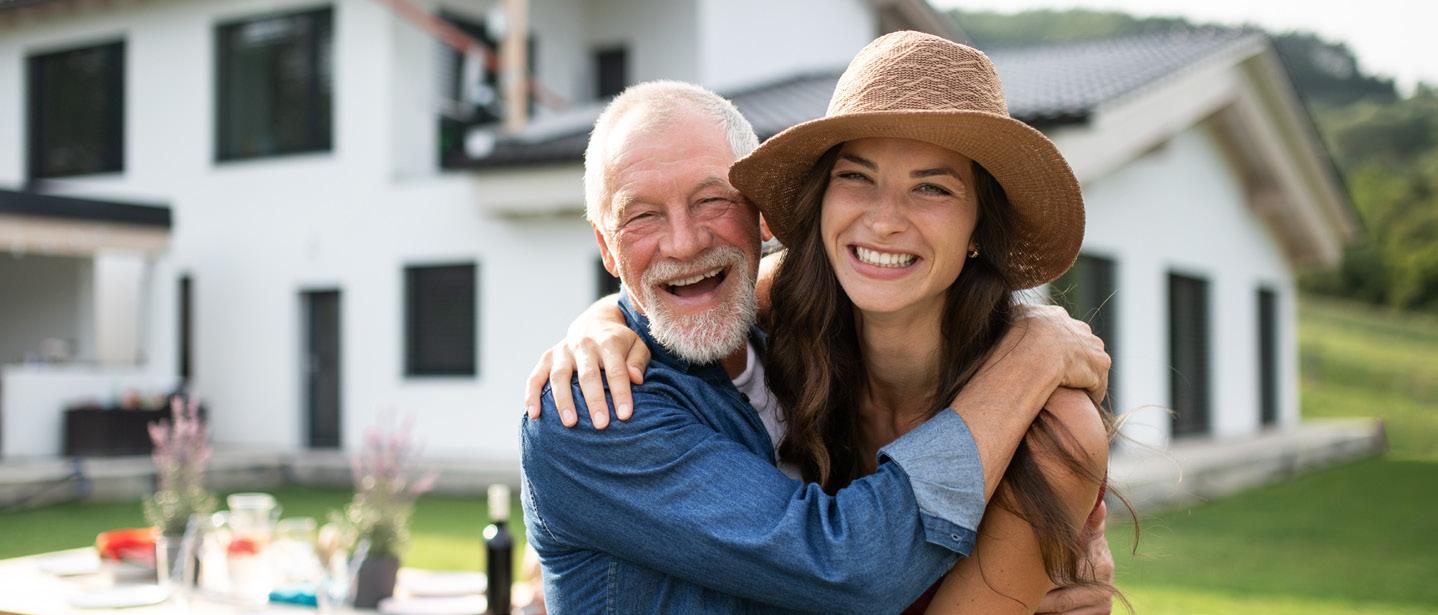
ing a little stuck in his ways. This could include trying new, healthful foods instead of sticking with unhealthful processed foods. Many younger people are well-educated about healthful eating. Kale smoothie, anyone? But this effect will only work if he’s willing to make positive dietary changes.
The same holds true for physical activity. Instead of maintaining a sedentary lifestyle, many younger people like to and are healthy and fit enough—to stay physically active. If she can get him out of the recliner and into the gym or on the walking trail, that extra movement could add years to his life. A wife his age may be less motivating when it comes to exercise as she is experiencing similar age-related aches and pains.
The same holds true for intimacy. A same-age wife may lack the libido of a younger wife.
In general, younger people are more internet savvy and likely to turn to reputable, up-to-date sources online to find sound health information. This can help the older husband to become more proactive about his health with preventative screenings (did you know that the onset of colonoscopies is now 45?).
Of course, establishing a marriage should be based upon love, trust and mutual respect. But gaining a few extra healthy years represents a nice perk. But that only holds true if the younger wife promotes good health and if her older husband adopts new, healthful habits.
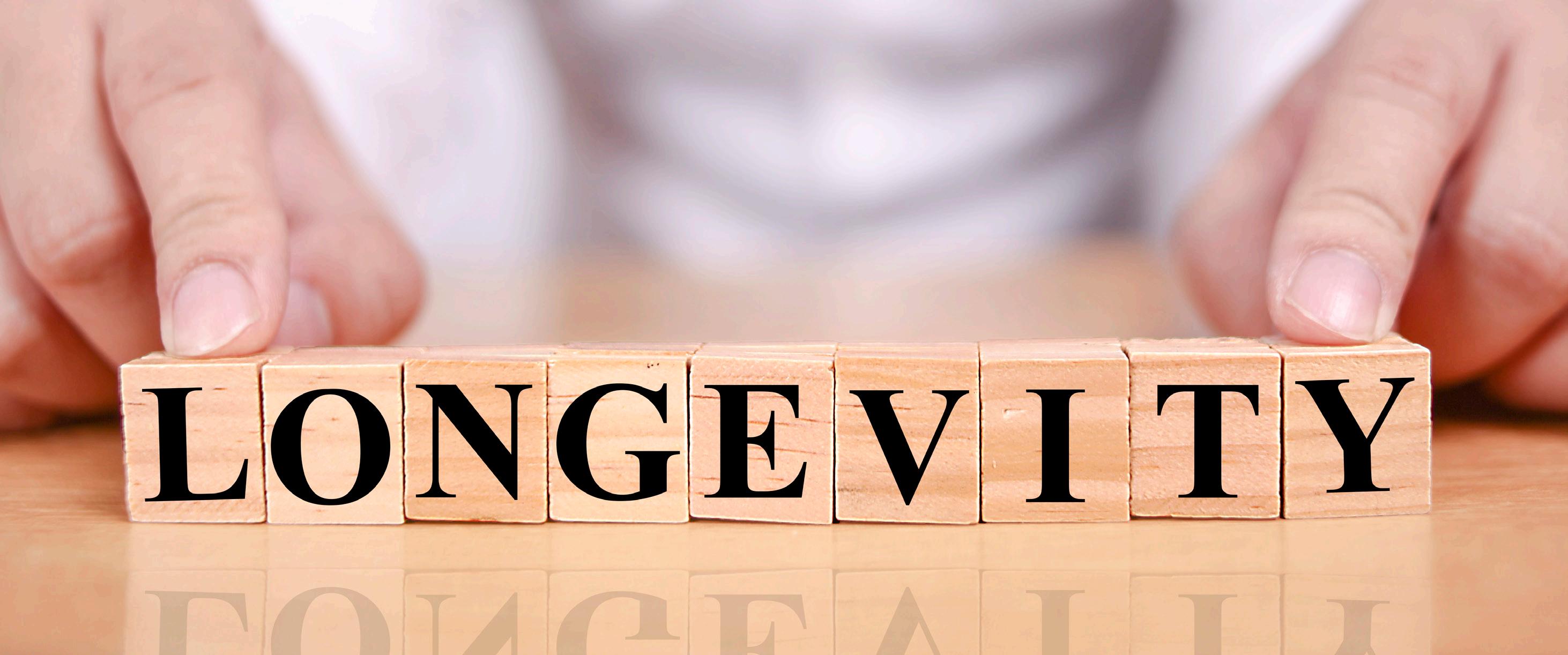
Traditionally, women tend to outlive men by an average of seven years.
However, emerging data from United Nations Population Division tracking longevity worldwide from 1990 to 2020 indicate that that longevity gap is shrinking and will continue to narrow.
By 2030, the average life expectancy for women will be 86.54 and for men 83.13.
One of the reasons that age gap is narrowing has to do with men’s health improving. More men embracing healthy living such as eating right, eschewing tobacco products and exercising, is making a difference. For most people, this begins with patient education in the doctor’s office.
Generally speaking, women have been the family’s health champion. During their childbearing years, women become accustomed to regular doctor’s visits and are typically the parent who takes the children to pediatrician visits. This segue into healthcare can aid in keeping women on track with health. Stereotypically, men are not as proactive about professional healthcare. But as more men have become involved with their family’s healthcare, perhaps that interest in health extends to them as well.
Conventionally, women have connected with each other on a deeper emotional level with their friends and loved ones than the stereotypical man who relies only on himself. As men have begun to take more time to socialize and build strong relationships and connections than in the past, this factor may be helping with longevity.
In the past, women have been more concerned about maintaining a slim build through exercise and dieting than men. That may have helped more women with longevity, even if the reasons for exercise and healthful diet weren’t for the best reason of all: good health. But more men have become interested in exercise for health reasons and not just for sports performance while young.
Trish Levine, director of communication and marketing and director of health and wellness at Oswego YMCA, said that the organization currently has more male members
than female members in the 13- to 24-year-old age group. From then on, the numbers are equal between the genders until age 50-plus, where nearly twice as many women join as men. But that is still an improvement, according to Levine.
“I have led group fitness classes and provided personal training and coaching for over 30 years,” she said. “In the past several years, especially following the pandemic, the increase in active older adult male group class participants has increased. In particular, we are seeing greater participation of men in our mind-body classes such as yoga, Pilates and tai chi.”
John Burger, 78 and a longtime Oswego YMCA member, is a certified strength and conditioning coach and fitness center volunteer. He refers to exercise as a “wonder drug” and that staying strong through the decades is vital.
“Cardio is crucial, but you want to enter old age — whatever old age is — with muscle,” Burger tells members.
Although many “diets” are not healthful, the awareness of food choices and the role of the family chef has helped women understand more about how food affects health. But in more recent years, men have begun educating themselves on nutrition.
“Fitness is one of the biggest aids in longevity next to the proper diet,” said Jill Murphy, personal trainer and co-owner of Mission Fitness in Syracuse. “Thirty minutes of moderate cardio a day has been proven to produce new brain cells, therefore promoting excellent brain health.
“Doing cardiovascular activity on a regular basis will increase the conditioning of your heart and lungs. The leading cause of death in the United States is heart disease, so when implementing fitness into your lifestyle you’re helping to combat this No. 1 killer.
“Exercise helps lower blood pressure, lower body fat and promotes healthy insulin levels when coupled with the proper diet and weight training will help increase the integrity of your bones, ligaments and tendons.”
Falls causing broken bones in older adults often begin a downward spiral in their health as they decon-
Age gap is narrowing: By 2030, the average life expectancy for women will be 86.54 and for men 83.13.
dition and lose muscle tone while healing from the break. In fact, 20% to 30% of adults 65-plus who experience a fractured hip die within 12 months, according to a 2009 study published by The Journal of the American Medical Association. Fortunately, it’s possible to reduce the risk of bone breaks.
“Weight training helps prevent osteoporosis,” Murphy said. “By increasing bone density alone, that would prevent broken bones with a fall. Also, by having strong muscles through proper weight training and a strong heart and lungs through cardiovascular exercise you have a much less chance of an injury doing everyday movements like walking up and down the stairs, gardening, shoveling and mowing the lawn just to name a few.”
Lauren Hosek, certified strength and conditioning specialists, exercise physiologist and Vitality Fitness Program coordinator at SUNY Upstate Medical University, also promotes exercise for longevity.
“The fitness field is rapidly growing as more research about exercise and longevity is developed,” Hosek said.
She said that the benefits of exercise include improved heart health, “sleep quality, mood, cognitive function, memory and immune and digestive system function. These benefits lead to overall health and can help to ward off certain risk factors for mortality. We know that exercise reduces the chances of such risk factors including hypertension, Type 2 diabetes, atherosclerosis, coronary artery disease, stroke and some cancers.”
Although these health conditions can be managed, avoiding them bodes well for greater longevity.
Exercise helps improve health at the cellular level. Hosek explained that as people age, the molecular caps on the end of the chromosomes — telomeres — shorten.
“Research has found that individuals who exercise regularly have longer telomeres, comparable to those who are multiple years younger, while those who are sedentary have shorter telomeres, reflecting their biological age,” Hosek said.
Regular exercise also promotes better quality of life, an effect that Hosek has noticed at the Vitality Fitness Program at Upstate. Even among the older adult population, exercise increases independence and greater ease in participating in activities.
Engaging in risky behavior is another area which has in the past disproportionately involved men, whether the male-dominated dangerous occupations like commercial fishing, forestry, farming and construction; engagement in hobbies like motorcycling or base jumping; performing ill-advised stunts; or substance abuse.
Safety education and equipment are helping save lives, such as rollover protection structures on tractors that keep farmers safer. More men than women use tobacco (13.1% compared with 10.1% of women as of 2021, says the National Institute on Drug Abuse and between the two, men who smoke use more tobacco than women who smoke). However, fewer people overall use it currently. In addition, more women are engaging in dangerous occupations and activities, which statistically narrows the gender gap.
Although COVID-19 deaths and drug overdoses in the past few years have statistically widened the gender longevity gap according to a report in JAMA Internal Medicine, it’s likely that this anomaly will not affect the gap long-term and it’s likely women will on average outlive men.
Researchers have indicated that men’s Y chromosomes in cells linked to age-related disease and death may be why they tend to die younger than women. That’s why it’s especially important for men to make the necessary lifestyle changes to support good health.
Heart disease is the leading cause of death among men, according to the American Heart Association, and half of the time, no symptoms indicate a problem.
Fortunately, men have several strategies for reducing risk of heart disease.
It’s vital to recognize that age correlates with higher risk. Once you hit age 40, that risk begins to increase. Instead of reacting to a problem, it’s better for patients to talk with their providers early to prevent heart trouble, especially if they have a family health history of heart attack. Discuss health history with your family so you know if heart disease or other disease runs in your family.
Not all heart disease is preventable. But you can make changes to reduce your risk. The Centers for Disease Control and Prevention states that 60 to 80% of risk is governed by factors within the patient’s control.
“Exercise has many health benefits such as improved lung
and cardiovascular capacity,” said Lauren Hosek, certified strength and conditioning specialists, exercise physiologist and Vitality Fitness Program coordinator at SUNY Upstate Medical University. She added that exercise can reduce the risk factors for hypertension (high blood pressure), type 2 diabetes, atherosclerosis (plaque in the arteries) and coronary artery disease.
Tobacco use raises risk of heart attack and stroke, among other effects deleterious to good health.
“Avoid things like tobacco, vaping, drugs and alcohol,” said physician Thomas Grady, cardiologist with Oswego Health.
He also advocates for regular exercise, a minimum of 30 minutes of moderate exercise five times a week. “Moderate exercise” could be a brisk walk. But Grady said finding an activity you like is important to maintain consistency. Men’s exercise tends to focus more on strength training. Although that’s important for good health, aerobic exercise like brisk walking, kickboxing, basketball or swimming laps promotes cardio-
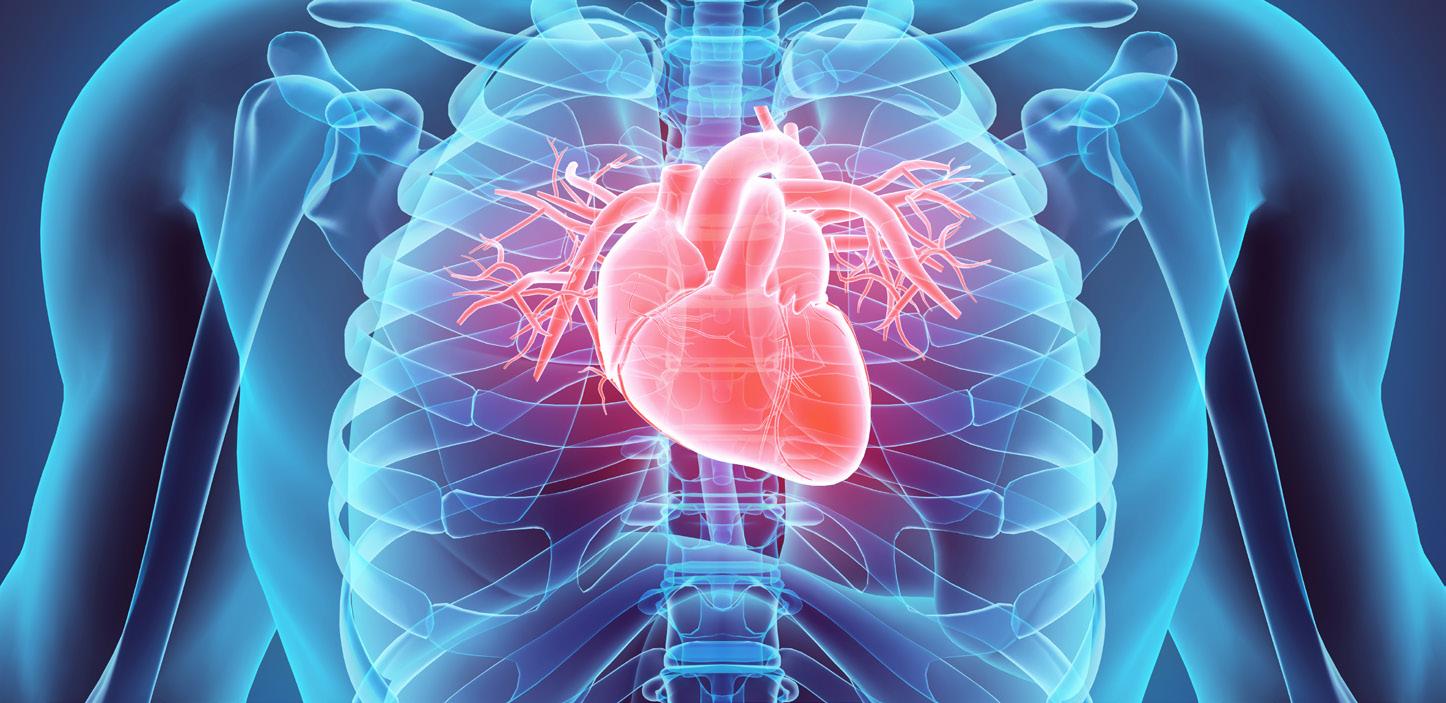
vascular health.
Screen for and manage chronic conditions. Talk with a primary care provider about lab work to monitor cholesterol, blood pressure, and particularly for those who are obese, diabetes screening. The website of the American College of Cardiology (www.acc.org) offers a risk calculator. Take any medication prescribed for chronic conditions, as this helps improve health.
People with untreated sleep apnea are at twice the risk for heart attack as those who don’t have the condition, according to Harvard Health.
“Sleep apnea is very important,” Grady said. “We should all have evaluations for it as most of us have it to a certain degree. It can be detrimental to your lives.”
Many people with sleep apnea snore and someone else tells them about it. Most experience daytime sleepiness and do not feel well-rested.
For heart health, what you eat matters a lot.
“Limit processed foods and go easy on salt,” Grady said.
Many providers advise shifting to an eating plan such as DASH or the Mediterranean diet reduces intake of saturated fat, trans fat, processed carbohydrates, high-sugar foods and red meat. A balanced diet is rich in fiber, whole grains, produce and sources of lean protein.
Taking care of your heart includes developing purpose for living and social connections. These decrease the risk of depression. Grady encourages patients to “develop something you have a passion for that you’re good at. Find someone who can mentor you in that passion you have. Invest time in that. Have some type of connectedness with friends, family and significant other. When you’re working, go 100% but have time for yourself for your hobbies, like gardening, painting, or kayaking — whatever helps you have a healthy lifestyle. Contributing to the betterment of humanity is good for the soul.”
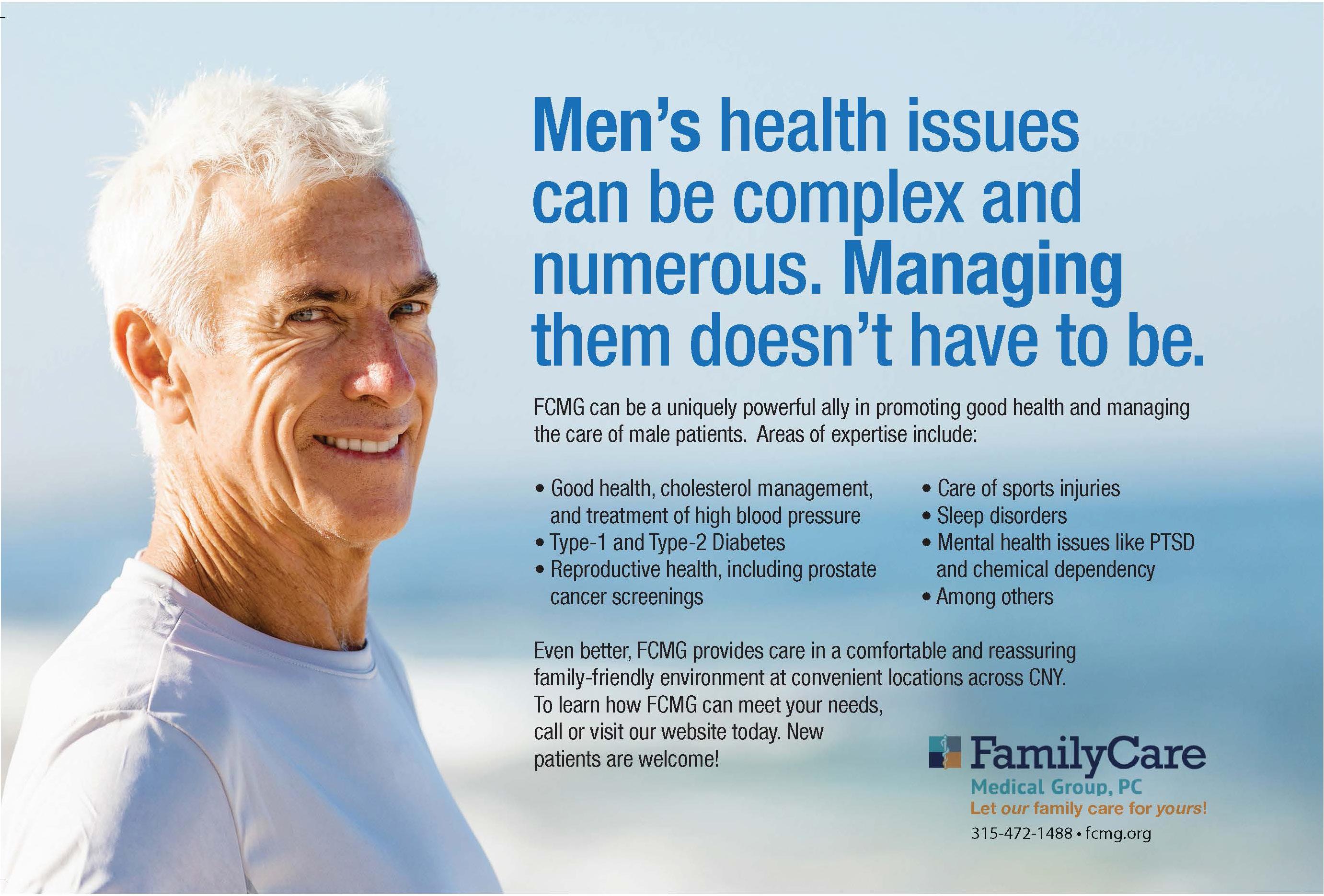
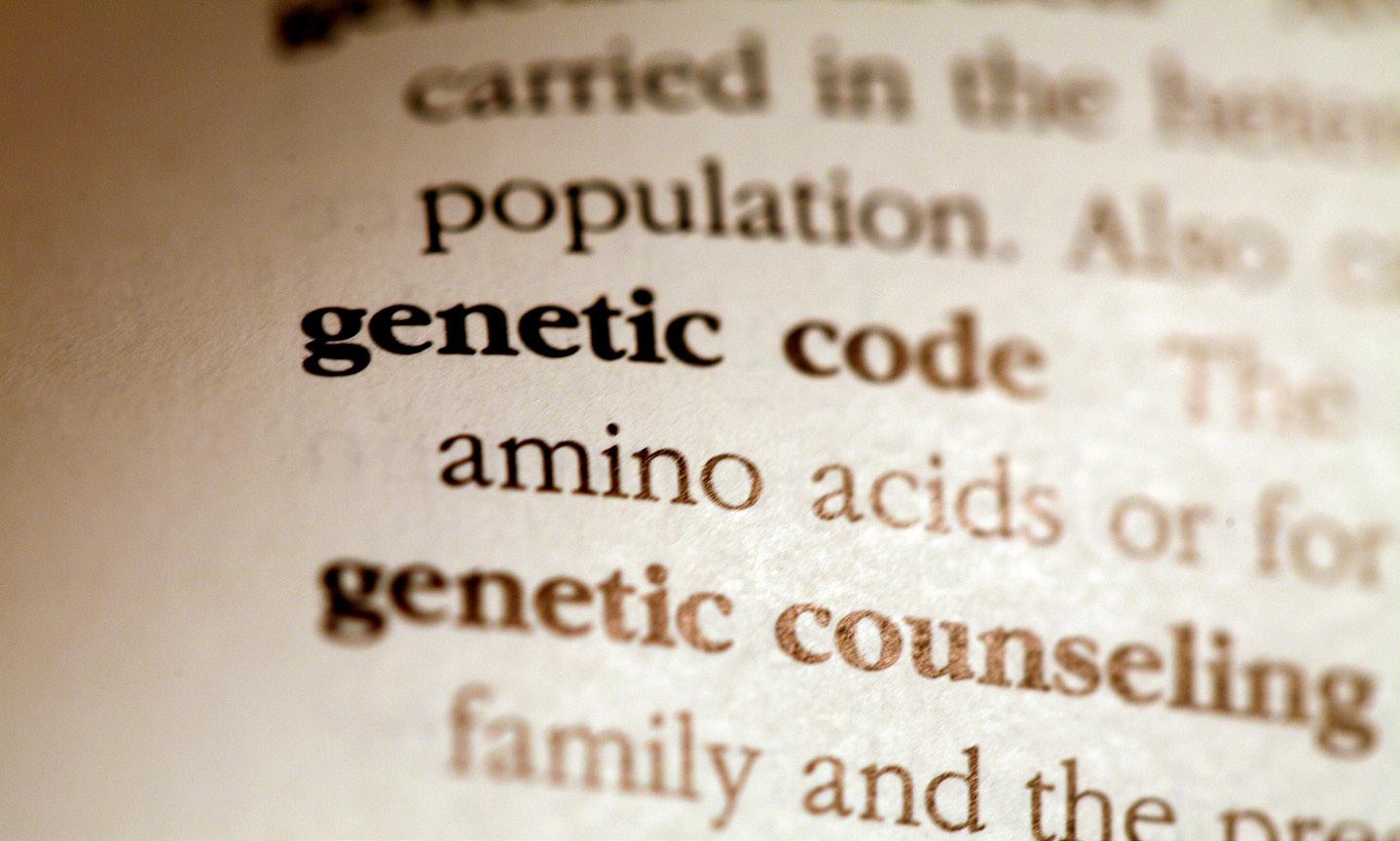
Many people think of genetic counseling as only discussing prenatal tests with parents.
However, there’s much more to the career than that.
Physician Gloria J. Morris, a genetics counselor who holds a Ph.D., helps patients understand their risk for hereditary cancers. She is also a clinical associate professor of medicine and an attending physician in the cancer genetics program at Upstate Cancer Center. But many genetic counselors are master’s trained providers.
“My specific niche in genetic
counseling has evolved after my medical training in oncology, where I have previously specialized in treating patients with breast and gynecologic cancers, pancreatic cancers and brain cancer,” Morris said.
“During my many years’ experience, I have seen the emerging importance of identifying hereditary mutations in DNA repair genes in order to best guide treatment decisions for patients as well as to guide other family members for cancer screening.”
Adding cancer risk assessment and specific gene testing to her practice made sense so patients and their families could better know their
Early detection of hearing loss is essential, especially with summer activities approaching. Whether it’s gathering with friends for outdoor barbecues, attending concerts or enjoying the tranquil sounds of nature during hikes, your ability to fully immerse yourself in these experiences relies on your hearing health.
Untreated hearing loss can lead to social isolation and withdrawal from your summer activities. Early hearing detection and treatment help enhance communication and make daily conversations easier. As a result, you’ll have smoother social interactions and deeper relationships. With improved hearing, you’ll soak
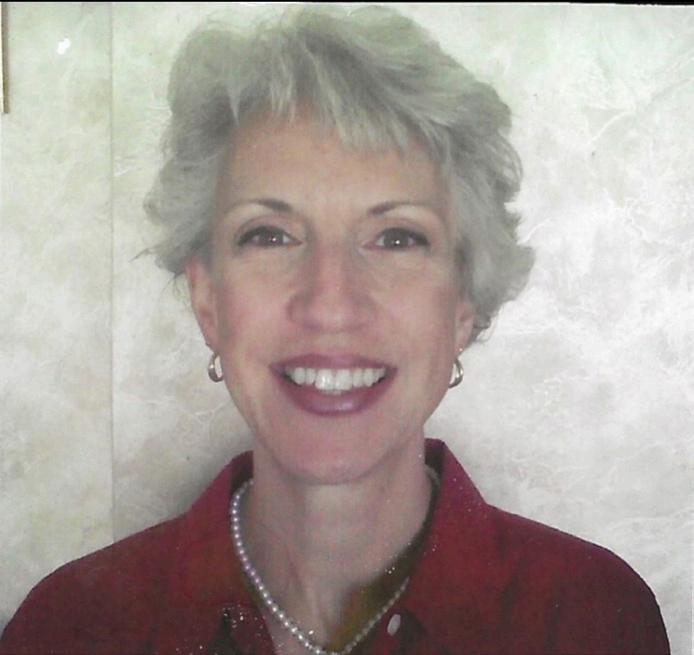
Physician Gloria J. Morris, a genetics counselor who holds a Ph.D., helps patients understand their risk for hereditary cancers.
risk and treat any cancer present. Discoveries of cancer predisposition genes in recent years have broadened the field in genetic testing and helped more patients. Since this type of work relies upon research, the field is ever-evolving.
Morris majored in biology with honors at LeMoyne College. Her specific training then encompassed medical school with a research program at the Medical University of South Carolina in Charleston, South Carolina, followed by internship and residency in internal medicine and fellowship in medical oncology, all in Philadelphia at centers which have strong genetics programs.
“As a team, I also work with master’s-level genetics counselors who have specifically sought degrees in multiple areas of genetic counseling, of which cancer risk assessment is only a portion,” Morris said. “Master’s-level genetics counselors also are skilled in prenatal genetics, inherited metabolic syndromes, and other disciplines as well.”
up every moment of summer fun with clarity and enthusiasm.
Catching hearing loss on time is like giving your brain extra protection. Research shows that ignoring hearing issues can negatively impact your mental fitness. It can also increase your risk of dementia. Early intervention could reduce these risks, ensuring your brain stays active and alert as you age.
Schedule a hearing test today to ensure you don’t miss out on any of the vibrant sounds of the season.
Submitted by Beltone Hearing Care Center. Visit www.beltonesound.com to find your nearest location.
The 988 Suicide & Crisis Lifeline is a free service that offers 24/7 call, text and chat access to trained crisis counselors for individuals who are suicidal, experiencing a mental health or substance use crisis, or any emotional distress. This service also supports those concerned about
When a person is diagnosed with some kinds of cancer that can be hereditary, it’s important to uncover the potential risk for family members so they can know their options.
“Testing is being recommended more and more universally and therefore training colleagues in all specialties in order to accommodate this paradigm shift is an active endeavor,” Morris said. “Whether we detect a hereditary mutation or not, the testing process can be very fulfilling to either rule out a hereditary predisposition and thus reassure families or to rule in a hereditary predisposition based on a specific gene mutation and therefore optimize treatment in a precise molecular manner. Counseling on surveillance strategies in order to detect early onset of cancers at their curable stages is most fulfilling.”
Because of the sensitive nature of this kind of information, genetic counselors must be compassionate yet detail oriented.
“In addition, personable communication skills, empathy and the ability to easily explain complicated molecular terminology, are very important for a genetics counselor,” Morris said.
She encourages anyone interested in becoming a genetic counselor to “seek out specific training programs, gain shadowing experience in clinics doing genetic testing, persevere in study of the biological and other sciences and learn about molecular techniques and other disciplines to be able to explain the genetic testing process to patients and their families well.”
According to the Bureau of Labor Statistics, the annual mean wage for a genetic counselor in New York is $93,050. Local information was not available.
someone in need of crisis support. In Central New York, 988 Lifeline is staffed and operated by Contact Community Services, ensuring local support for the community.
Who can contact 988?
The service is inclusive, open to individuals of all ages, genders, ethnicities, races, religions, sexual orientations, and socioeconomic statuses. Specialized lines are available for Veterans, LGBTQIA+ individuals, and Spanish speakers.
Will services be offered in other languages?
Yes, 988 Lifeline offers phone services in English and Spanish, with Language Line Solutions providing translation in over 150 additional languages. However, chat and text services are currently available only in English.
What happens when I contact 988?
You’ll be connected to your local 988 Lifeline crisis center based on your area code, where a trained counselor will assist you. If the local center is busy, your call will be redirected to a national backup center to ensure you receive the support you need.

Dear Savvy Senior,
Can you recommend some good resources to help me locate some quality doctors in my area? I’m looking for an orthopedic doctor for my 77-year-old mother and a new internist for me, since my doctor retired last year.
Searching Susan
Dear Susan,
Finding and researching doctors
is a lot easier than it used to be. Today, there are variety of websites you can turn to that provide databases of U.S. doctors, their professional medical histories, and ratings and reviews from past patients on a number of criteria. Here are some good sites to help you get started, along with a few additional tips that can help you find the right doctors.
To help you locate some good doctors in your area, a good first step is to get referrals from trusted
friends, along with any doctors, nurses or other healthcare professionals you know.
You also need to check your insurance provider. Call your insurer for a list of approved doctors or ask whether the doctor you’re considering is in-network.
If your mother is enrolled in original Medicare, you can use the care compare tool at “Medicare.gov/ care-compare” — click on “Doctors & Clinicians.” This will let you find doctors by name, medical specialty or by geographic location that accept original Medicare. If she’s enrolled in a Medicare Advantage plan, call or visit the plan website to get a list of approved candidates.
Once you find a few doctors, you need to call their office to verify that they still accept your insurance, and if they are accepting new patients.
You should also consider hospital affiliation. Your choice of doctor can determine which hospital you go to, if needed, so find out where the doctor has admitting privileges. Then use some hospital ratings services like “Medicare.gov/care-compare” (click on “Hospitals”) to see how it compares with other hospitals in the area.
After you find a few doctors you’re interested in, there are various websites you can consult, to help you evaluate them.
For example, the Federation of State Medical Boards offers a tool at DocInfo.org that will let you find out doctor’s board certifications, education, states with active licenses, and whether or not a physician has been disciplined by a state medical board.
The Centers for Medicare & Medicaid Services (CMS Data) is also a good source for researching doctors. For example, it will help you find out how many times a doctor did a particular procedure and what they charge for it — go to “Data. CMS.gov/tools” and click on “Medicare Physician & Other Practitioner Look-up Tool.” And to learn about the financial relationship that doctors have with drug and medical device companies, visit “OpenPaymentsData.CMS.gov.”
Some other good sites for finding and researching healthcare professionals include Healthgrades (healthgrades.com) and Vitals (vitals.com).
Both sites provide substantial doctor’s information on education and training, hospital affiliations, board certification, awards and recognitions, professional misconduct, disciplinary action, office locations and accepted insurance plans.
They also offer five-star ratings scales from past patients on issues such as communication and listening skills, wait time, time spent with the patient, office friendliness and more. But be aware that while physician rating websites can be helpful, they can also be misleading and unreliable.
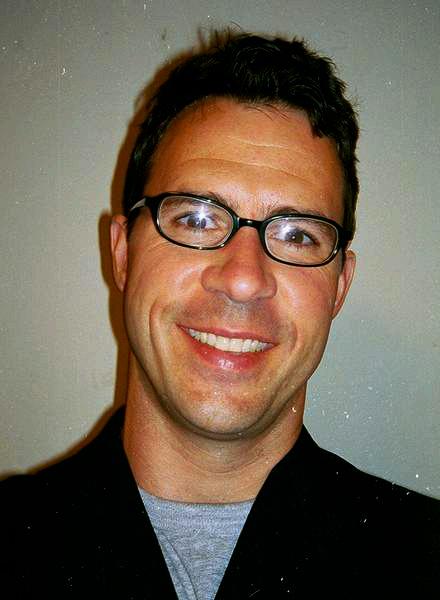
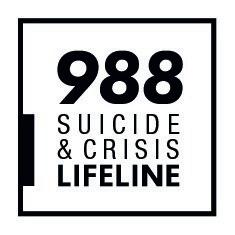



Identity theft is when someone uses your personal information to impersonate you or steal from you. These crimes can impact your physical, mental and emotional health and lead to lost opportunities that are often hard to measure. Learning more about identity theft can help you keep your personal information safe.
There are two types of identity theft you should be aware of:
• Thieves stealing your data, physically or digitally, without contacting you directly.
• Thieves contacting you directly and convincing you to provide sensitive information.
In these instances, you may never know how the thief got your information.
Identity thieves steal personal information like your name, address, credit card or bank account numbers, Social Security number (SSN), and medical insurance account numbers. They use this information to:
• Buy items with your credit cards or bank accounts.
• Obtain new credit cards or accounts in your name.
• Use your SSN to get a job.
• Open phone or utility accounts in your name.
• Steal your tax refund.
• Use your health insurance to obtain medical care.
• Pretend to be you if they are arrested.
To spot identity theft:
• Keep track of your mail for

missing bills or other documents.
• Review your credit card and bank statements for unauthorized transactions.
• Obtain and review your credit reports regularly to make sure they do not include accounts you have not opened.
While no plan is perfect, taking the precautions below can help you better protect your personal information:
• Protect documents that have personal information.
• Ask questions before giving out your SSN.
• Protect your personal information online and on your phone by using a strong password and adding multi-factor authentication when offered.
• Safeguard your information on social networks.
Q.: What is the estimated average Social Security payment that a person receives each month?
A.: The estimated average monthly Social Security benefit for a retired worker in 2024 is $1,907.00. The average monthly Social Security benefit for a worker with a disability in 2024 is $1,537.00.
Q.: My spouse doesn't have enough work credits to qualify for Social Security retirement benefits. Can they quali-
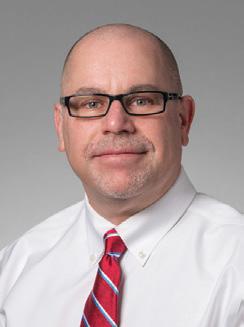


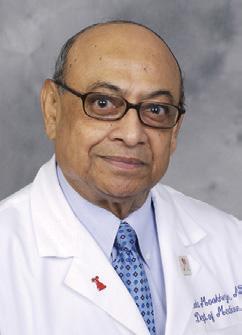
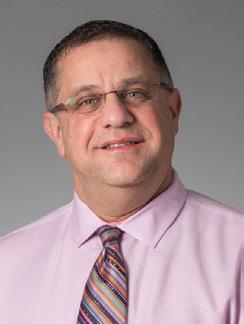







What to Do if You Believe Someone Has
• Report fraud to the company where it occurred.
• Contact a credit bureau to place a fraud alert on your credit report.
• File a complaint with the Federal Trade Commission at www. identitytheft.gov.
• File a police report.
For more information about how to protect your SSN from identity thieves, read our publication,"Identity Theft and Your Social Security Number" at www.ssa.gov/pubs/EN05-10064.pdf. Please report suspected Social Security imposter scams — and other Social Security fraud — on the Office of Inspector General’s website at www.oig.ssa.gov/report.
It’s important to protect yourself against identity theft because it can damage your credit status. Repairing this damage can cost you a great deal of time and money.
Please share this information with your family and friends.
fy on my record?
A.: A spouse receives one-half of the retired worker's full benefit unless the spouse begins collecting benefits before full retirement age. If the spouse begins collecting benefits before full retirement age, the amount of the spouse's benefit is reduced by a percentage based on the number of months before he or she reaches full retirement age. You can learn more by reading our online publication, "Retirement Benefits", at www.ssa.gov/pubs.
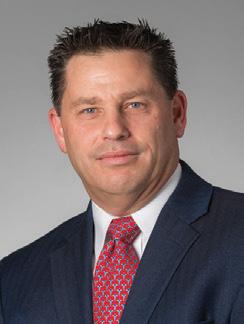


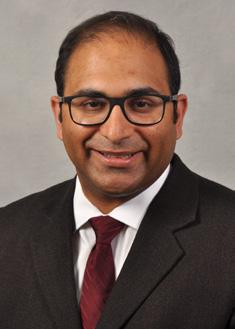
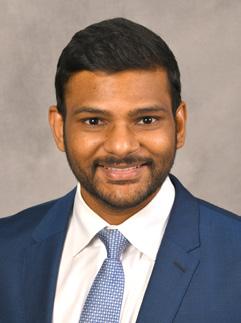
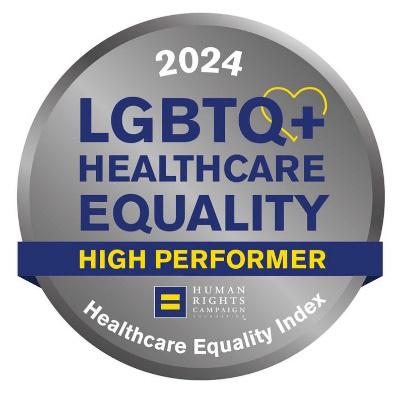
Crouse Health has received “LGBTQ+ Healthcare Equality High Performer” designation from the Human Rights Campaign Foundation (HRC).
The designation was awarded in the 16th iteration of HRC’s Healthcare Equality Index (HEI) just released.
A record 1,065 healthcare facilities participated in the HEI 2024 survey and scoring process. Of those, 462 received the “LGBTQ+ Healthcare Equality High Performer” designation.
“To further support our mission to provide the best in patient care and promote community health, the work of diversity, equity, inclusion and belonging (DEI&B) has never been more important and hardwiring DEI&B across the organization — [it] is our priority,” said Crouse Health President and CEO Seth Kronenberg. “As a leading healthcare employer in Central New York, it is critical for Crouse Health to strategically focus on addressing the health equity gap, equitable care, cultural patient experiences and assist the organization in prioritizing the creation of a more equitable and inclusive work environment.”
Said Twiggy Eure, Crouse’s director of DEI&B: “We continue to be enthused about our participation in the HRC’s Healthcare Index Equality process as it provides a roadmap that helps to further hardwire our DEI&B efforts across the organization and celebrate our growth, going from our
2019 status to becoming a high performer in 2024. Our goal is to reach the leader status. We work hard to ensure that our culture of belonging strengthens our ability to meet and provide meaningful care and support to our lesbian, gay, bisexual, transgender and queer patients, families, and employees. We look forward to continuing our efforts and collaborating with our LGBTQ+ vendors, patients, employees and community,”
This year’s HEI comes as LGBTQ+ adults are twice as likely as non-LGBTQ+ adults to be “treated unfairly or with disrespect by a doctor or healthcare provider” in the last three years, according to the Kaiser Family Foundation. The impact of anti-LGBTQ+ legislation combined with a history of discrimination in healthcare settings has the potential to cause even more LGBTQ+ people to delay or avoid seeking healthcare, which makes the HEI even more meaningful for those looking to find LGBTQ+-inclusive care.
Excellus BlueCross BlueShield has been recognized by Forbes as one of the best employers in the United States for diversity.
The health plan was honored among 500 organizations, with 1,000 or more employees, on the list of Forbes Best Employers for Diversity 2024.
“Inclusion, diversity, equity and access are core to who we are and what we do every day,” said Jim Reed, president and chief executive officer, Excellus BCBS. “This recognition is evidence of the ways our employees contribute to an environ-
On Wednesday, May 8, ConnextCare’s registered dental hygienist Holly Steffen began seeing dental patients at the schoolbased health center at the Frederick Leighton Elementary School.
The plans for the dental program were first announced earlier this year, and after months of anticipation, students will now have access to these services including routine cleanings, X-rays, fluoride treatments, sealants and comprehensive oral health education.
This health center will bring dental services to both the Frederick Leighton school and well as the adjacent Oswego High School.
“The ConnextCare team has been anxiously waiting to offer dental services to the students at the Frederick Leighton and Oswego High schools and I am thrilled that the site is now fully operational. Holly has extensive experience as a dental hygienist and is truly dedicated to improving the
ment where each of us can feel seen, valued and empowered to be our best selves.”
This is the second consecutive year Excellus BCBS made the list. The nonprofit health insurer ranked No. 25 among all employers nationally and No. 5 among employers in the insurance industry.
“I couldn’t be prouder of our employees for the way they show up each and every day,” said Sady Alvarado-Fischer, vice president, diversity, equity and inclusion officer, Excellus BCBS. “Inclusion, diversity, equity and access is everyone’s re sponsibility, and I’m excited that the dedication, passion, and work of so many throughout our organization is having a positive impact.”
The Best Employers for Diversity 2024 were identified through an inde pendent survey of 170,000 U.S.-based employees.
The following criteria were used in the evaluation:
• Employees were asked to give their opinions on a series of state ments regarding age, gender, ethnici ty, disability, LGBTQIA+ and overall diversity in their current workplace.
8 ranking on their 2024 list of America’s Best Midsize Employers.
oral health of the students within these schools” said Tricia Peter-Clark, ConnextCare president and CEO.
“We would like to thank Dr. Kilmer and the Oswego City School District board of education for their ongoing commitment to expanding these essential services into the district. Without their support none of this would have been possible.”
ConnextCare is partnering with the district to establish a comprehensive school-based health center program, with plans to offer primary care and mental health later this year.
This school-based health center will mark ConnextCare’s 16th site across Oswego County. This will also be the sixth school district within the County that ConnextCare offers SBHC services. If you are interested in enrolling your student in the dental program in Oswego, please visit www.connextcare.org/SchoolBased/ EnrollmentForms.
nah Moore has recently joined Upstate Urology at Oswego Health.
Moore is from Cato and earned a Master of Science in nursing in 2022 from SUNY Upstate Medical University. She completed her Bachelor of Science in nursing in 2017 from Roberts Wesleyan College.

• Participants were also given the chance to evaluate other employers in their respective industries that stand out either positively or negatively regarding diversity.
• Research was carried out to evaluate how companies fared across a range of diversity-related best-practices including representation, accountability, communication, internal and external initiatives.
The Best Employers for Diversity 2024 award is presented by Forbes and Statista Inc., a global data and business intelligence platform established in Germany in 2007. The full list is available on the Forbes website.
Excellus BCBS was recognized by Forbes earlier this year with a No.
Moore has 10 years of experience as a registered nurse working throughout Central New York. The majority of her career has been spent at Upstate University Hospital, including positions within its inpatient medical surgical units and intensive care. In 2017 Moore transitioned to Upstate neurology where she was an RN for Upstate Medical University’s neurology residents and a headache specialist. In 2020 she advanced to Upstate Community Hospital and worked in its transitional care unit until 2023 when she found her true passion, delivering comprehensive urological care at AMP Urology in Fulton.
Moore will provide care at Upstate Urology at Oswego Health alongside urologist Eyal Kord.
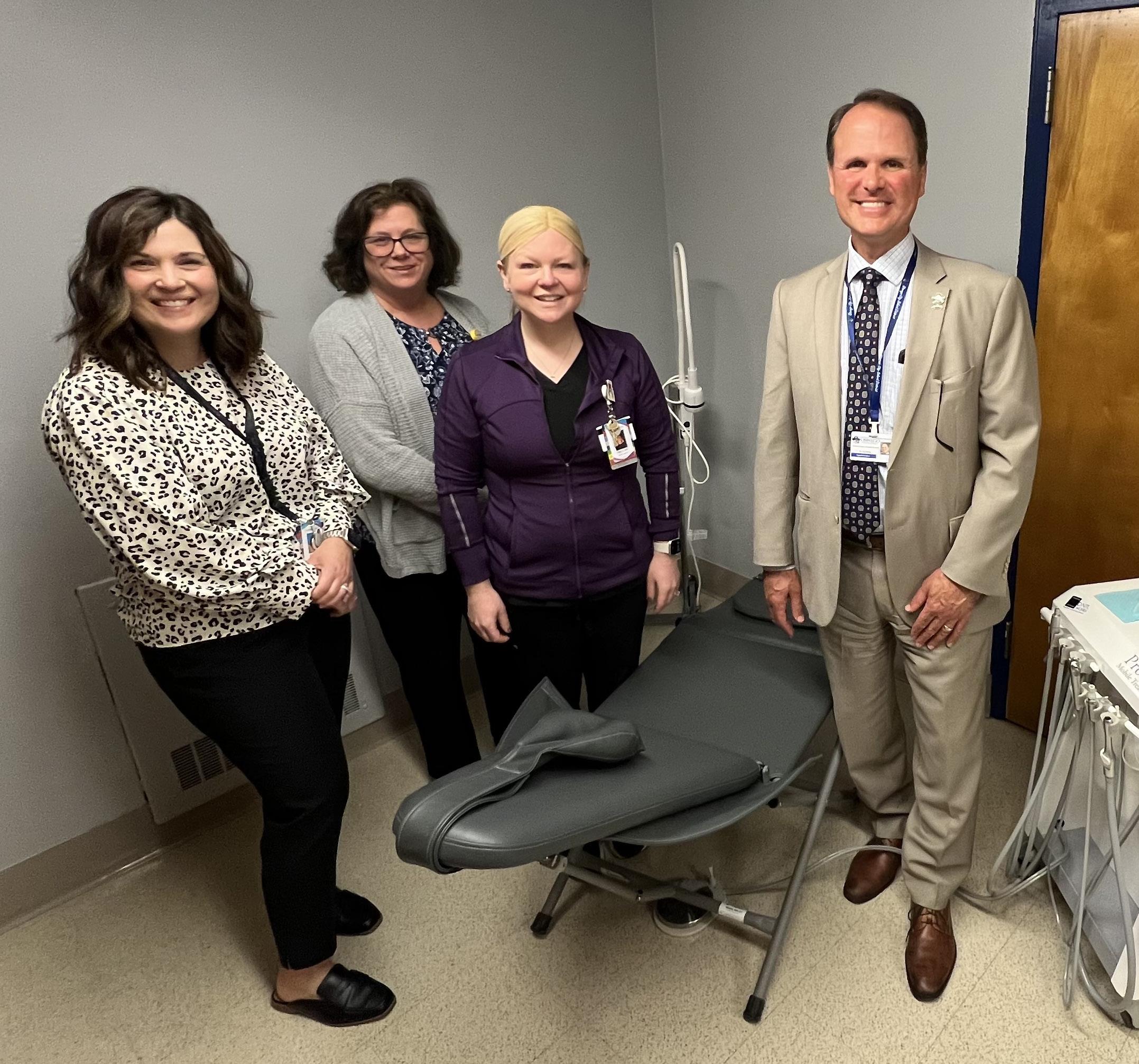
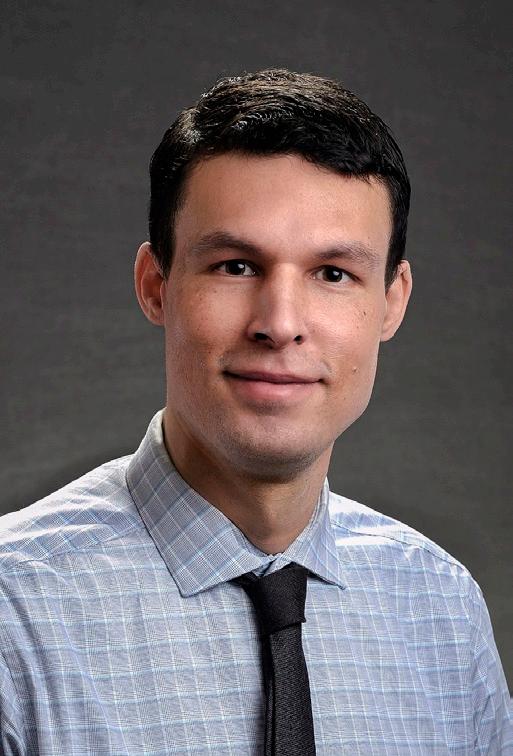
Physician Daniel Lewis has
joined St. Joseph’s Health Hospital as a nocturnal hospitalist.
Lewis received his Bachelor of Science in human development with a concentration in cognitive development from Cornell University’s Col lege of Human Ecology in Ithaca. He then earned his medical degree from University of Pittsburgh School of Medicine where he also completed a year as a general surgery preliminary resident.
Before pursuing his medical degree, Lewis studied electrical and nuclear power theory. He served six years in the U.S. Navy as a nuclear electrician’s mate aboard the The odore Roosevelt CVN-71 and was deployed during Operation Iraqi Freedom.
Lewis completed his residency at St. Joseph’s Health. He is board-certi fied in family medicine.
“I believe my diversified resume
translates well for a hospitalist who treats patients with such a wide array of illnesses and injuries,” said Lewis. “I love the challenge of a constantly changing work environment. I’m looking forward to continuing my ca reer at St. Joseph’s Health Hospital.”
Lewis has also trained as a fine dining cook under a certified master chef from the Culinary Institute of America. His other interests include software development, working on cars and caring for his pets.
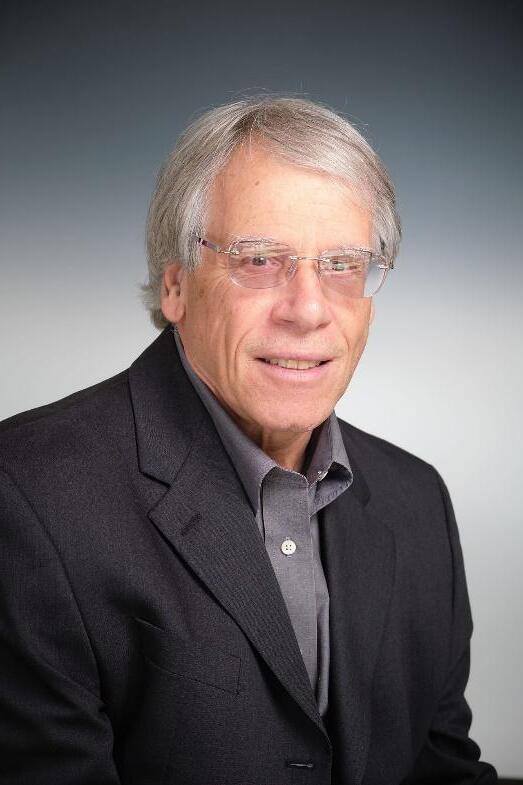

The Crouse Health Foundation
has announced the appointment of Anthony “Tony” Fiorito, member of the board’s executive committee, as the new Crouse Health Foundation board chairman.
Fiorito, an architect and real estate developer, is president of Partnership Properties and board chairman of the Downtown Committee of Syracuse.
While welcoming Fiorito, the


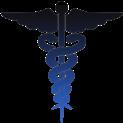
foundation acknowledged the exemplary service of outgoing Chairman Vince Spina, president of BPAS Actuarial & Pension Services. During his tenure, Spina helped lead essential Crouse Health Foundation initiatives, including the “Little Fighters” campaign for the Baker Regional Neonatal Intensive Care Unit and the Crouse Health Classic Golf Tourna ment.
In addition to welcoming a new chairman, the foundation is announced the addition of three distinguished members to its board of trustees:
• Andrea Autry: program direc tor for Girls on the Run, Upstate New York;
• Willie Reddic: associate dean

in 1974 and celebrating its 50th anniversary, is the fundraising arm of Crouse Health. The foundation is governed by a voluntary board of directors responsible for the investment, management and administration of all funds and other property given to Crouse Health.
St. Joseph’s Health recently
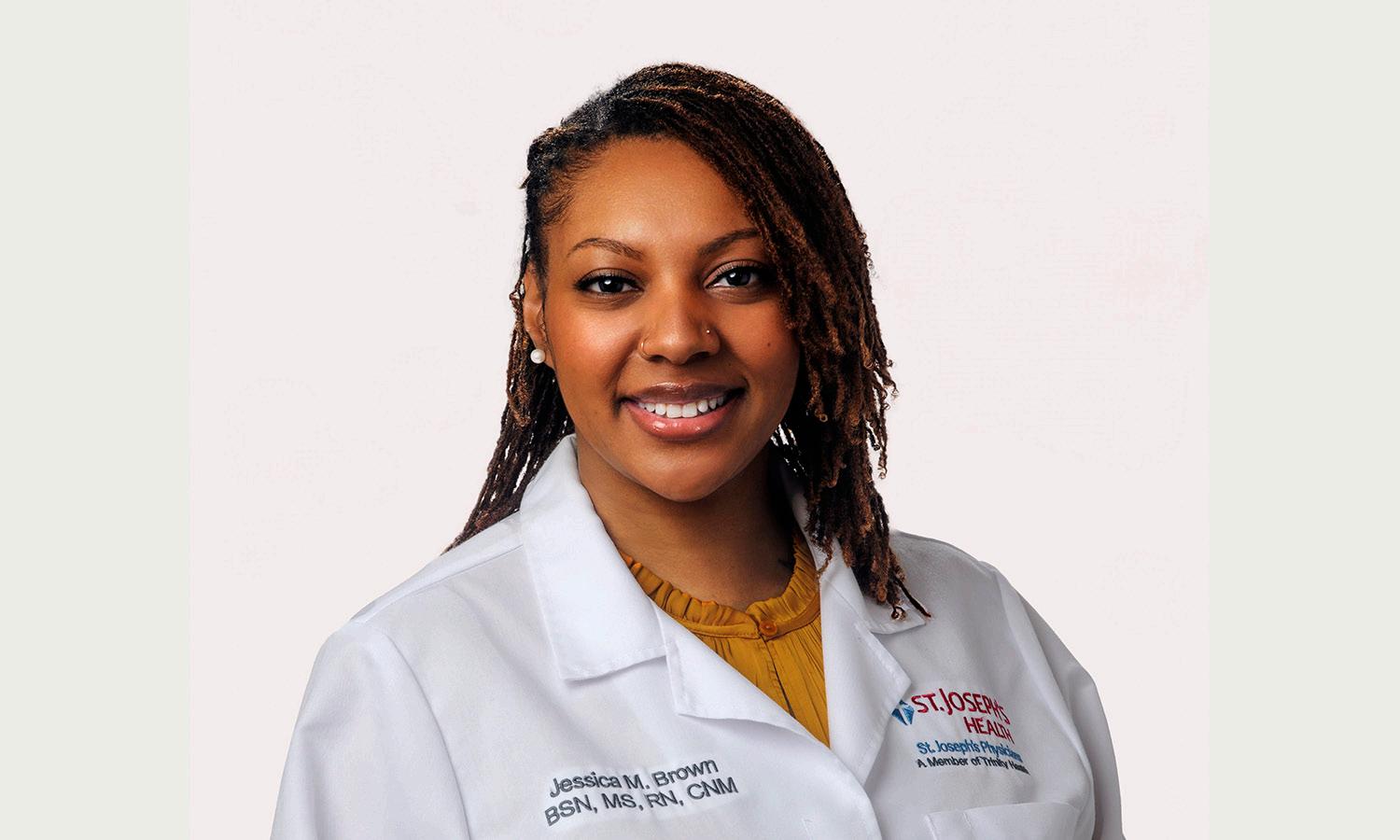
of business education at Syracuse University’s Whitman School of Management;
• Jim Tollar: regional vice president for advertising sales at Spectrum Reach “Tony, Andrea, Dr. Reddic, and Jim bring to our board a wealth of experience and a commitment to innovation,” said Heather Waters, executive director of
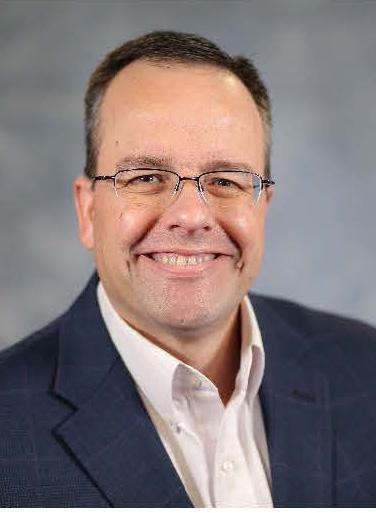
the Crouse Health Foundation. Our entire board is dedicated to Central New York’s future and supporting Crouse Health’s growth.”
The Crouse Health Foundation, established
Jessica Brown welcomed certified nurse midwife Jessica M. Brown to St. Joseph’s Physicians Primary Care Center OB-GYN office in Syracuse.
Brown is a member of the American College of Nurse-Midwives and the New York Association of Licensed Midwives. Before joining St. Joseph’s, she worked as a registered nurse in labor and delivery at Upstate University Hospital-Community Campus and Crouse Hospital in Syracuse. She was also a registered nurse for the surgical inpatient department of Upstate University Hospital–Downtown Campus.
“My goal as a professional midwife is to care for those in underserved communities,” said Brown. “I want to bring forth the vision of birth as a physiological process, decrease maternal mortality rates and intercept health disparities. I think St. Joseph’s Health is a perfect place to plant my roots.”
Brown earned her Master of Science in midwifery from Thomas Jefferson University in Philadelphia; her Bachelor of Science in nursing from Roberts Wesleyan College in Rochester, New York; and her Associate of Science in nursing from St. Elizabeth College of Nursing in Utica. She is pursing her doctorate in nursing practice with a conferral date of June 2024. Internal Medicine Associates of Auburn is a private group practice comprised of four internal medicine physicians and five nurse practitioners, certified in family and adult health.
Internal Medicine Associates of Auburn rates in the top-tier among primary care medical groups in Upstate New York based on their quality performance scores year over year, and is also an IPRO Quality Award Honoree which recognizes outstanding performance by healthcare providers and stakeholders throughout New York State.
The IPRO Quality Award earned by the practice was specifically in recognition of organization-wide commitment to quality improvement and exemplary performance in the practice’s ongoing transition to value-based care.
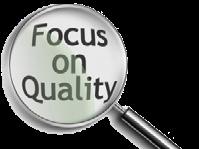








regularly, and practice mindfulness and self-compassion.
• Try something new: Step outside your comfort zone. It can be intimidating but can also lead to new connections and relationships.
Listen to our episode, “The Loneliness Epidemic” on the Community Check-in to learn more about this issue and who is most at risk.

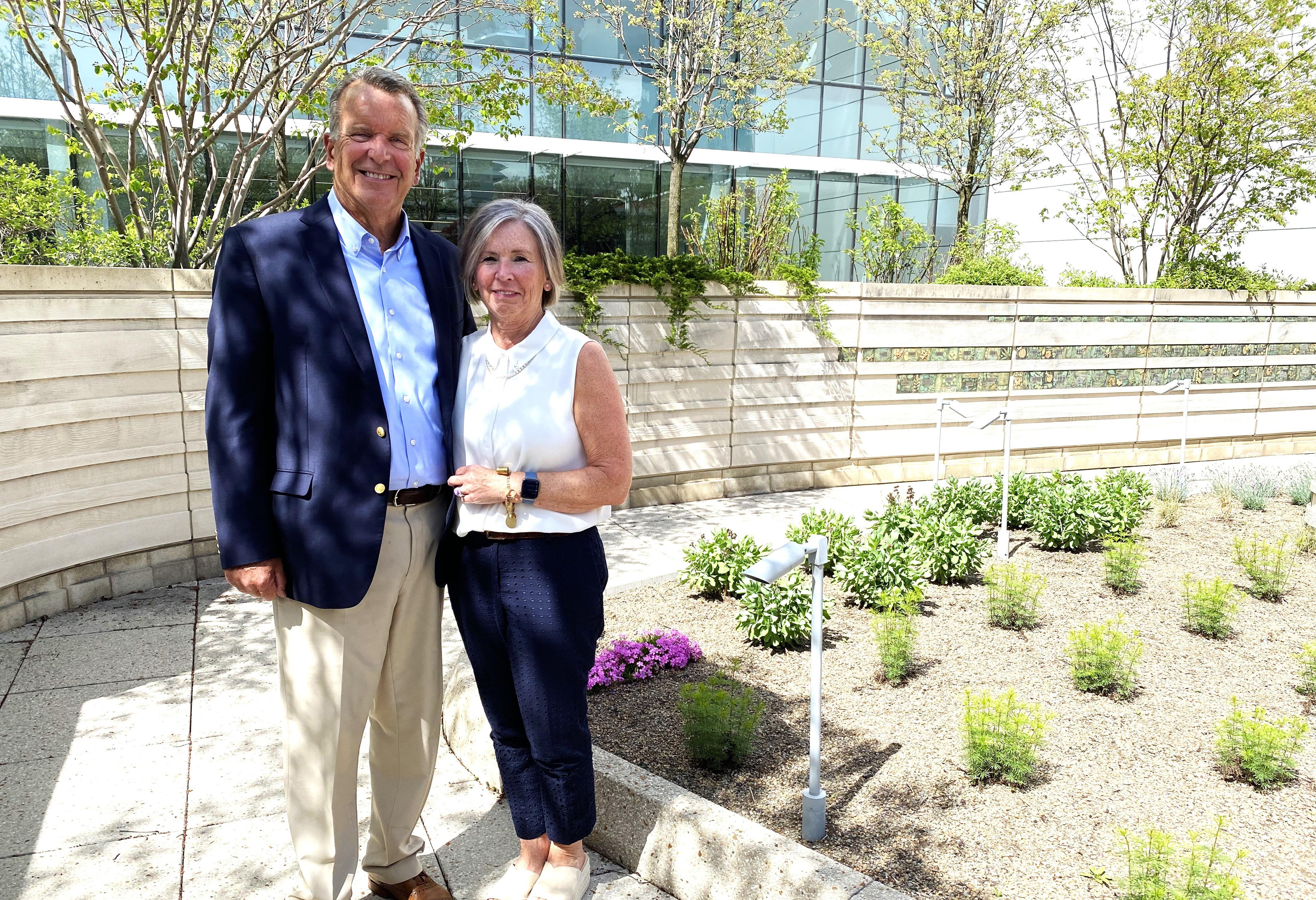
Thanks to a couple’s donation, Upstate Medical University is improving its healing garden, considered as a sanctuary for employees, patients and families
By Norah MachiaWhen Mary Pat Hartnett was a nurse at Upstate Medical University, she often walked down a hospital corridor lined with glass windows that overlooked a garden area.
On her way to meetings at the other end of the corridor, she would stop and look out the windows at the green space, known as the healing garden and start to think of ways to improve it.
The healing garden is between the hospital and the Upstate Cancer Center and is accessible from an indoor second-floor entrance.
Upon her retirement after nearly three decades at Upstate Medical University, Hartnett and her husband, Joe, made an important decision. They prioritized the garden space in their estate planning, recognizing the need for a significant change. “At that time, there was only money for maintenance in the budget,” said Hartnett. “We wanted to make a donation specific to improving the healing garden.”
Their decision would mark the beginning of a new chapter for the special garden. The couple contacted the Upstate Foundation and established a specific fund for a new,
improved green space. Last fall, their gift was used for a major overhaul of the watering systems and the planting of perennials, said Carolyn Hendrickson, Upstate Foundation director.
The landscaper, Scenic View Hardscapes of Syracuse, planted the last of the garden’s annuals this spring. New tables and chairs, along with 16 self-watering planters, are also planned for the healing garden, said Hendrickson.
Tables and chairs will also be part of the project, along with outdoor decorative lighting for those who want to enjoy the area in the evenings. The Hartnetts said all the changes have created a more welcoming natural environment, the main goal of the renovation.
The healing garden, a testament to the couple’s vision and generosity, is more than just a physical space. It represents a sanctuary for employees, patients and family members, offering a respite from the clinical environment. For some, it provides a momentary escape from the realities of illness and treatment, said Mary Pat Hartnett.
Studies have shown that getting outside and taking in the natural
world helps both physical and mental health. Even just sitting outdoors and breathing fresh air can lower blood pressure and reduce stress.
For those who cannot get outside, the healing garden is perfectly placed by the windows of the Upstate Cancer Center. This location allows children and adults receiving treatment indoors to view the garden space, which is visible to patients receiving care on the second floor (hematology and oncology infusion), the third floor (pediatric oncology) and the fourth floor (adult hematology).
“We called the Upstate Foundation a year ago because we wanted to donate to this very special cause,” with a goal to create a beautiful and peaceful outdoor space in the healing garden, explained Hartnett, who retired three years ago and has a daughter working as a nurse at Upstate.
The Upstate Foundation, founded in 1976, is a nonprofit entity that receives and administers gifts and bequests in support of Upstate Medical University. The foundation raises money for patient care, healthcare provider education, scientific research and community health and
well-being initiatives.
Donations are made to the foundation for various reasons, including by patients and family members who are grateful for the care they received at Upstate, along with current and retired employees who want to show their support for the hospital.
Hartnett’s parents had set an example of creating a lifelong legacy of giving back to the community. It was 25 years ago that her brother, who was 32 years old, died of sudden cardiac arrest. After his untimely death, her parents donated AEDs (automated external defibrillators) to several locations, including Onondaga Community College, to help save lives. This was before the devices were required in certain areas, she said.
The couple — who declined to say how much they donated to Upstate — said they are passing along the importance of generosity to the next generation. “You’re supposed to share what you have,” said Hartnett. “Our children have grown up with that attitude as well.”
The Hartnetts have three children and seven grandchildren. For more information: www. upstatefoundation.org